Planning your dream trip to Japan and wondering how to make the most of 10 days? You’ve come to the right place!
Get ready to dive into a detailed Japan Travel Itinerary 10 Days long, packed with insider tips, top recommendations, and all the essentials for an unforgettable first visit. This itinerary is designed to be comprehensive, yet easily adaptable if you want to extend your stay to two weeks in Japan. Having explored Japan myself, I can confidently say that with the right plan, you’re in for an incredible journey.
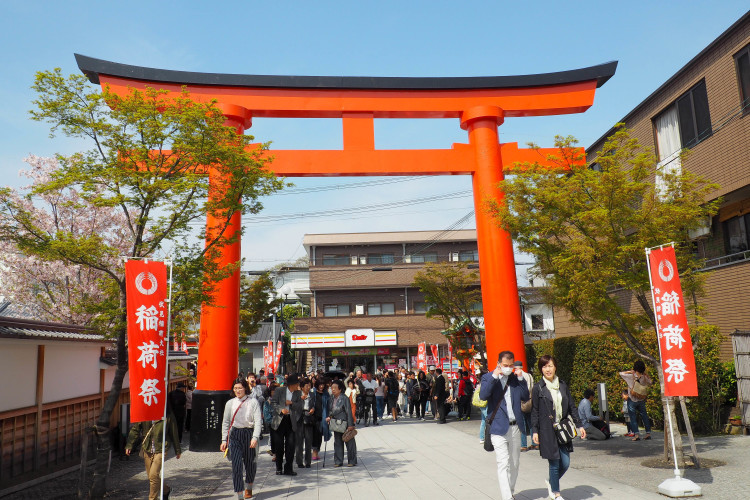 A vibrant street scene in Japan, showcasing the blend of modern and traditional elements.
A vibrant street scene in Japan, showcasing the blend of modern and traditional elements.
Japan is an exhilarating sensory experience, a captivating blend of the ultra-modern and the deeply traditional.
From the dazzling, neon-lit streets of Tokyo’s Akihabara, a haven for electronics and anime enthusiasts, to the tranquil beauty of Kyoto’s ancient temples and serene zen gardens, Japan offers a fascinating juxtaposition of past and future.
Prepare for a culinary adventure where each bite is more delightful than the last. You’ll find yourself saying “oishi!” (delicious) with every meal, as Japanese cuisine is truly exceptional.
If your visit coincides with cherry blossom season, you’re in for a magical spectacle. Imagine streets adorned with delicate white and pale pink blossoms, creating a breathtakingly beautiful and fragrant atmosphere throughout the country.
Japan has genuinely captured my heart as the most captivating country I’ve explored. (And I recently achieved my personal milestone of visiting 30 countries before turning 30!).
I’m eager to return to Japan and wholeheartedly encourage everyone to experience this unique corner of Asia sooner rather than later. Today, I’m sharing my meticulously planned Japan travel itinerary 10 days, researched extensively and followed closely during my own trip.
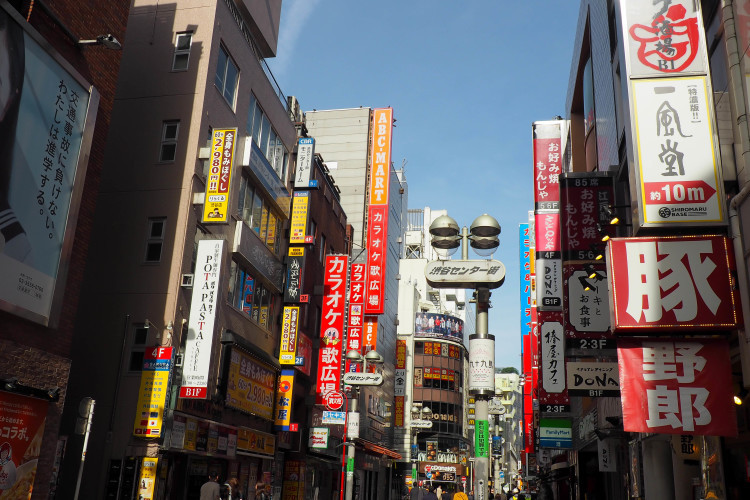 A serene garden in Japan, featuring lush greenery and traditional architecture.
A serene garden in Japan, featuring lush greenery and traditional architecture.
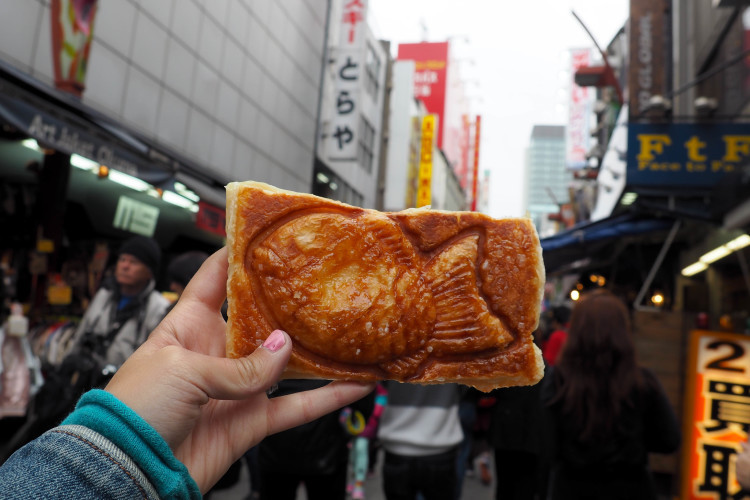 A bustling street in Tokyo, showcasing modern buildings and pedestrian traffic.
A bustling street in Tokyo, showcasing modern buildings and pedestrian traffic.
Your 10-Day Japan Itinerary: A Quick Glance
Initially, I wondered if 10 days in Japan would truly be enough time to experience the country. However, I was thrilled to discover how much you can see and do in 10 days in Japan, while also indulging in the incredible Japanese snacks I had heard so much about. [Pro-tip: pack comfortable, stretchy clothing!].
Japan is brimming with diverse and fascinating regions, and a 10-day Japan travel itinerary allows you to explore the highlights effectively. This itinerary is action-packed yet well-organized, but consider adjusting it if you prefer a more relaxed pace or are traveling with children.
Before you go further, check out my essential travel planning tips here!
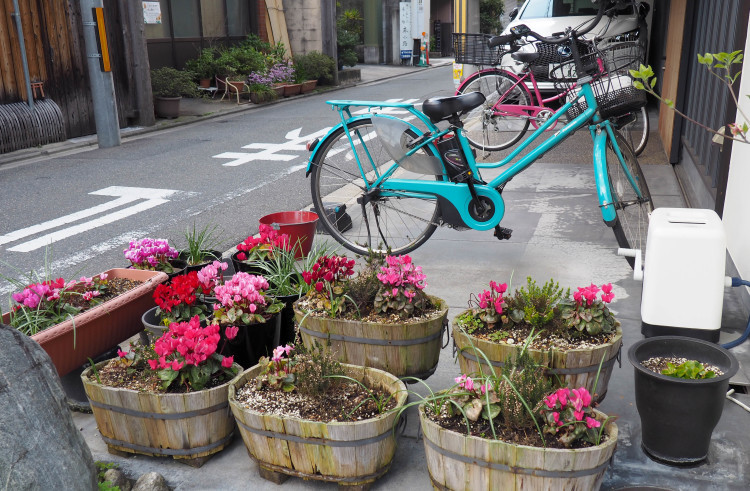 A vibrant market scene in Japan, with various food stalls and shoppers.
A vibrant market scene in Japan, with various food stalls and shoppers.
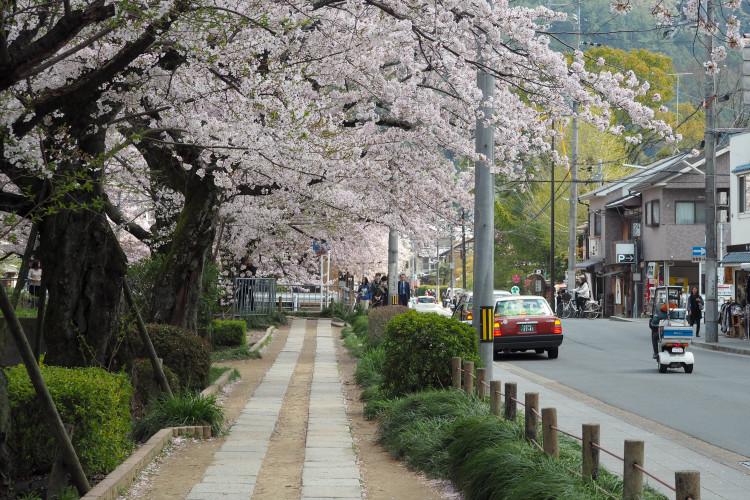 A picturesque temple in Kyoto, surrounded by lush trees and traditional Japanese architecture.
A picturesque temple in Kyoto, surrounded by lush trees and traditional Japanese architecture.
This Japan travel itinerary 10 days begins in vibrant Tokyo, including a day trip to choose from Kamakura, Nikko, or Hakone. Then, it takes you south to culturally rich Kyoto, with day excursions to Nara, Osaka, Hiroshima, and the enchanting Miyajima Island. Travel times are significantly reduced by utilizing Japan’s efficient bullet trains.
- Days 1-3: Tokyo – Immerse yourself in the capital city.
- Day 4: Day Trip from Tokyo – Explore nearby cultural or natural sites.
- Days 5-6: Kyoto – Discover ancient temples and traditional gardens.
- Day 7: Nara and Osaka – Encounter friendly deer and vibrant city life.
- Day 8: Miyajima and Hiroshima – Witness iconic landmarks and historical sites.
- Day 9: Morning in Kyoto → Tokyo – Enjoy a final Kyoto experience before returning to Tokyo.
- Day 10: Tokyo Morning/Afternoon → Airport – Last moments in Tokyo before departure.
Japan, an island nation in East Asia, is remarkably accessible despite its decent size, slightly smaller than California. The country boasts an exceptional and extensive train network. In my experience, Japan’s public transportation is arguably the most efficient and well-organized globally (coming from someone who grew up navigating the New York City subway system).
Despite being the 10th most populated country (it can get crowded!), Japan offers pockets of tranquility in its numerous gardens and temples found throughout the country.
Japan Pre-Travel Essentials
Finding the Best Flight Deals to Japan
For securing the best flight deals, I consistently rely on Skyscanner and Google Flights. Setting up price alerts on these platforms is a fantastic feature to monitor airfare changes.
Also, explore budget airlines, especially if you’re flying from within Asia where flight durations are shorter. A comprehensive list of budget airlines can be found here.
For context, my round-trip premium economy flight on China Airlines from San Francisco, with a brief layover in Taipei, cost approximately $1200 – during Easter and cherry blossom season. However, I did see coach fares for under $800. [No complaints about the upgrade my husband insisted on, but know that more affordable options are available.]
Flights from the East Coast USA may be slightly pricier but shouldn’t exceed an increase of more than $500 or so.
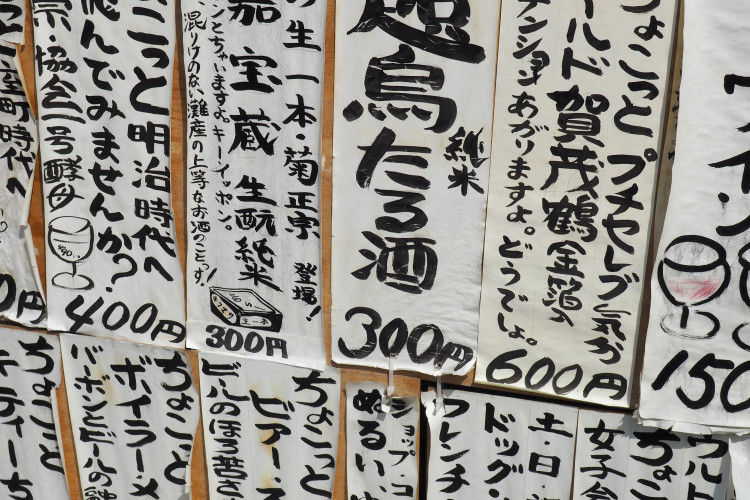 A traveler in Japan, standing in front of a traditional Japanese building with cherry blossoms in bloom.
A traveler in Japan, standing in front of a traditional Japanese building with cherry blossoms in bloom.
Accommodation Tips
To simplify your travel and minimize frequent hotel changes, this 10-day Japan travel itinerary suggests basing yourself in two main locations: Tokyo and Kyoto.
I highly recommend booking accommodations near major train stations in both cities. This will significantly ease your day trips and explorations outlined in this Japan travel itinerary 10 days.
In Tokyo, I chose to stay near Shibuya Station, a central hub with excellent connectivity to other districts. In Kyoto, we opted for accommodation close to Kyoto Station, given our planned day trips and the convenience of walking to our lodging after long days of travel by bullet train.
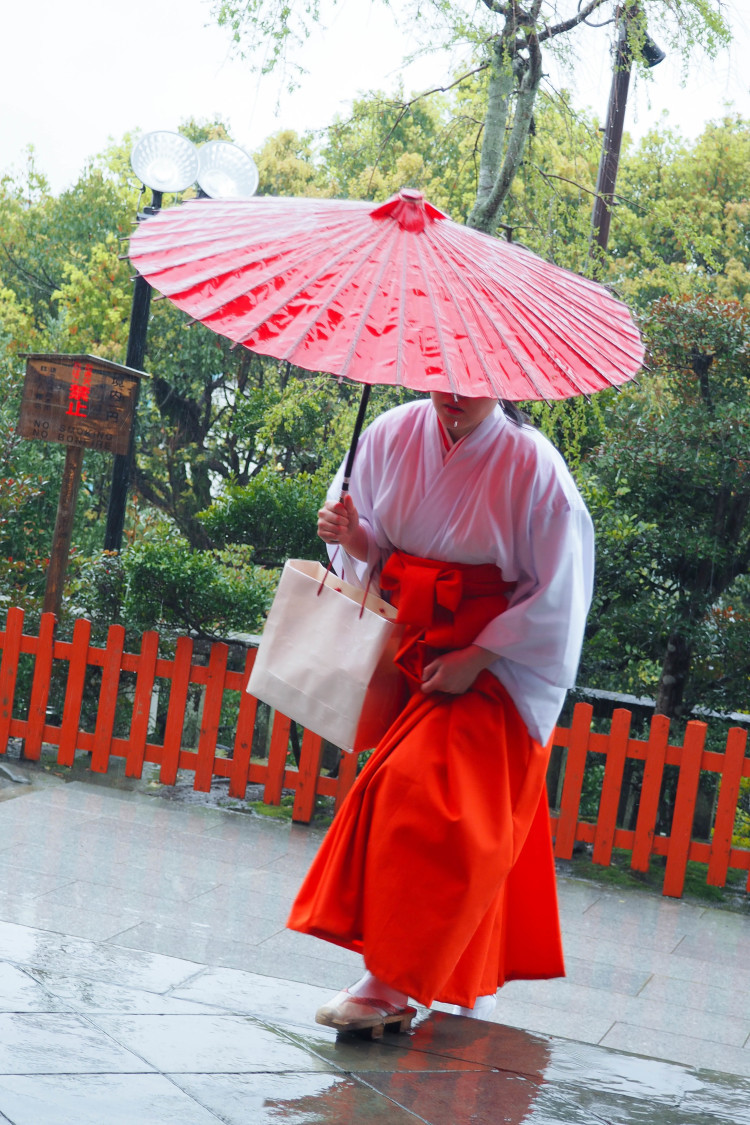 A traditional Ryokan setting in Japan, showcasing tatami mats and minimalist design.
A traditional Ryokan setting in Japan, showcasing tatami mats and minimalist design.
-
Recommended Hotels in Kyoto Near Kyoto Train Station: (Links to be added based on preference and availability)
-
Consider a Ryokan Experience: For an authentic Japanese cultural immersion, consider spending a few nights in a traditional ryokan (Japanese inn, often featuring bathhouses). Regrettably, I missed out on this due to late booking, especially during peak cherry blossom season. However, I’ve gathered some highly recommended ryokan options for my next visit: (Ryokan recommendations to be added).
Airbnb is also a great accommodation alternative, particularly cost-effective for longer stays in one location. Always review cleaning and booking fees, as these can impact the overall price, especially for short, 1-night stays.
New regulations for Airbnb rentals in Japan were implemented in June 2018. Listings are now required to be registered and display a license number on their booking page. Rest assured, all current Airbnb listings are compliant (those not registered in 2018 were removed), ensuring your bookings are legitimate.
While the specific Airbnbs we stayed in during our Japan trip are no longer listed, numerous other options are available on the Airbnb website.
Best Time to Visit Japan
There’s truly no bad time to experience a Japan travel itinerary 10 days, but each season presents unique advantages and considerations.
Spring (March-May): If witnessing the iconic cherry blossoms is a priority, April is ideal. However, be aware that April is also peak tourist season due to the blossoms. Visiting in early to mid-April, I experienced crowds, but the breathtaking beauty of cherry blossoms across the country was absolutely worth it.
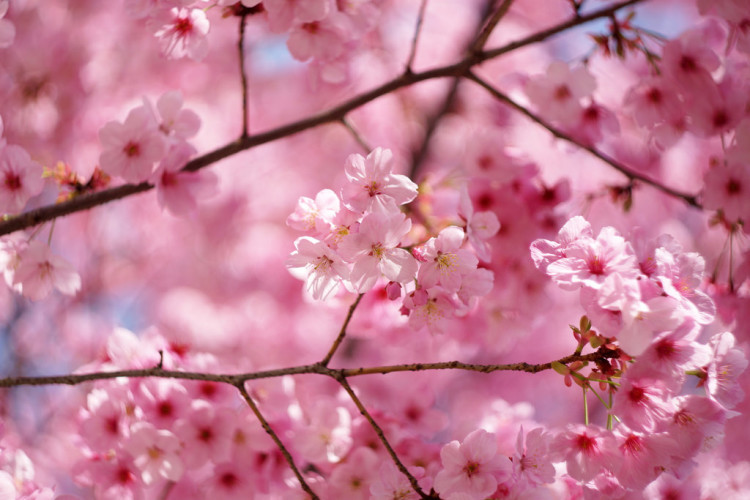 A scenic view of cherry blossoms in Tokyo, with modern buildings in the background.
A scenic view of cherry blossoms in Tokyo, with modern buildings in the background.
Fall (September-November): Autumn is another fantastic time to visit Japan, offering vibrant fall foliage with brilliant red leaves from September through November.
Summer (June-August): Summers are hot, humid, and can be rainy (though rain tends to lessen by early July).
Winter (December-February): Winters are generally cool, sunny, and dry, ideal for snow sports in mountainous areas.
Keep in mind that weather conditions vary significantly across Japan, so plan accordingly, particularly if visiting higher altitudes.
Further reading: When to Visit Japan: Weather, Seasons, Festivals, and Crowds
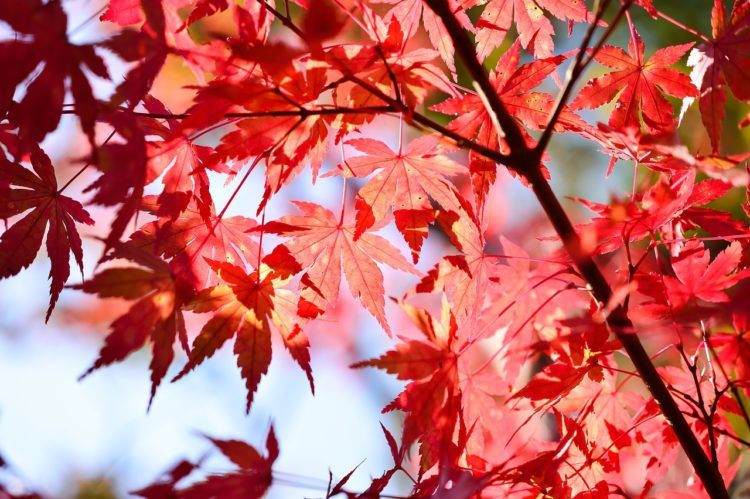 An infographic about the best month to visit Japan, highlighting seasonal attractions and weather patterns.
An infographic about the best month to visit Japan, highlighting seasonal attractions and weather patterns.
Exchanging Currency to Japanese Yen
Avoid currency exchange kiosks at airports or before your trip, as they typically offer less favorable exchange rates. Instead, withdraw Japanese Yen directly from ATMs at the airport upon arrival.
For frequent travelers, consider opening a Charles Schwab bank account. They reimburse all fees associated with international ATM withdrawals, effectively eliminating ATM fees worldwide, including in your home country. I’ve used this for years and saved significantly on fees.
Surprisingly, Japan, despite its technological advancements, is largely a cash-based society. Credit cards may be declined at many places, particularly smaller restaurants and street food vendors. Ensure you carry sufficient Yen.
For a quick USD to JPY conversion, roughly estimate by moving the decimal point two places to the right: ¥100 is approximately $1 USD. For reference, ¥10,000 is about $100 USD.
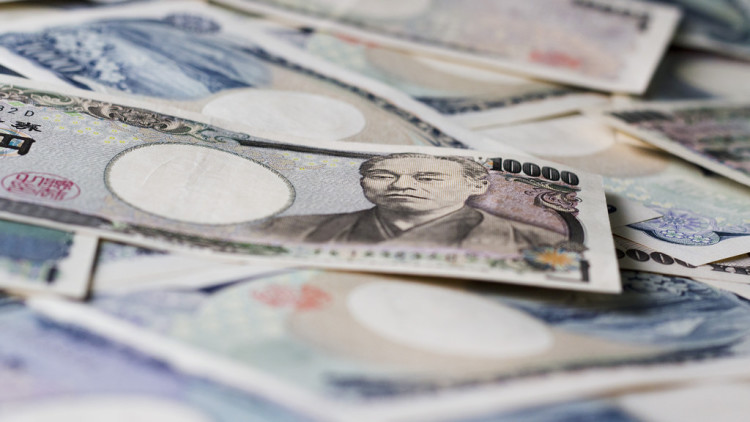 Japanese Yen banknotes, showcasing different denominations and portraits.
Japanese Yen banknotes, showcasing different denominations and portraits.
Getting Around Japan: Japan Rail Pass
If you’re visiting Japan from abroad (non-residents), you can purchase a JR train pass for various durations. The JR Pass provides access to most JR trains, including Shinkansen (bullet trains), the Miyajima ferry, and certain bus lines. Pass options include 7-day, 14-day, and 21-day passes.
For this 10-day Japan travel itinerary, a 7-day JR pass is highly recommended. The Green Car option, while slightly more expensive, is JR’s “first-class” and, in my opinion, well worth the upgrade for added comfort. Note that the JR Pass doesn’t cover all local buses or some private railway lines, but these are typically inexpensive, around ¥100-¥300 ($1-3 USD).
Crucially, purchase your JR Pass before entering Japan. It cannot be bought within Japan. Upon purchase (outside Japan), you’ll receive a voucher by mail to exchange for the actual pass at designated JR ticket offices in major Japanese train stations upon arrival.
Purchase your Japan Rail Pass here (the provider I used, with prompt voucher delivery). Free home delivery was a bonus. The JR Pass saved considerable money on Shinkansen travel and streamlined travel through JR stations.
I can’t imagine navigating Japan without a JR Pass. Explore JR Pass options (standard and green) here.
 A modern Shinkansen bullet train in Japan, ready for departure.
A modern Shinkansen bullet train in Japan, ready for departure.
JR Pass Update (Trial Sale in Japan): The Japan Rail Pass is being sold on a trial basis within Japan at a higher price until October 1, 2023, at major stations and airports. However, if you plan to use one, it’s more economical to purchase it beforehand from a reputable vendor. There’s no real advantage to buying it in Japan at a higher cost.
Japan’s public transportation is excellent, though initially overwhelming. It’s the most efficient and cost-effective way to travel around the country.
Electricity and Power Considerations
Japan uses the same 2-prong electrical outlets as the USA (Type A, 100V, 50/60 Hz). If coming from the US, note that some devices have 3-prong plugs.
Voltage differs, and a converter (distinct from an adapter) is necessary to adjust electricity voltage for devices using significant power (hair dryers, curling irons, straighteners).
To avoid voltage concerns, consider dual-voltage travel appliances like this dual-voltage blow dryer, dual-voltage mini straightener, and dual-voltage curling iron.
Pocket Wifi Router in Japan
You’ve likely encountered Pocket Wifi in your Japan travel research. What is it, and why should you consider it for your Japan trip?
Pocket Wifi is a portable device providing wifi to multiple devices (phones, tablets, laptops). One Pocket Wifi can support up to 10 devices, ideal for sharing with travel companions.
Wifi is less prevalent in Japan than in many other developed countries, making this device invaluable. Free wifi is available in hotels, Starbucks, and some restaurants, but having your own is highly recommended, especially in smaller cities. Note that some ryokans and older hotels may only offer LAN cable internet, necessitating Pocket Wifi.
Wifi is essential in Japan for train schedules, navigation, translations, and staying connected. Don’t be without it when needed!
Pocket Wifi delivery is convenient – directly to your Japan hotel. Return is simple using a prepaid envelope from any location in Japan.
Explore Pocket Wifi benefits and purchase options here. It’s a true travel essential!
Useful Japanese Phrases
- Hello/Good Afternoon: konnichiwa
- Good bye: sayonara
- Delicious: oishi
- Thank you: arigatō
- Please: kudasai
- Where’s the toilet: benjo wa doko desu ka?
- Does anyone speak English? Eigo no hanaseru hito wa imasen ka
Essential Packing Tips for Japan
Clothing: Japan’s seasons can be unpredictable. Pack layers. An umbrella (cute options here, here, and here) and a light raincoat (like this or this one) are recommended.
Rain was more frequent than expected during my 10 days in Japan; a raincoat was invaluable. A poncho is a compact alternative.
Electricity and Power: Japan uses 2-pronged “Type A” outlets (100V, 50-60 Hz). A travel adapter (for plug type) and power converter (for voltage, high-power devices) may be needed.
Comfortable, slip-on shoes are essential for temples, airports, ryokans, and some restaurants. My favorites here (on sale), here, and here. Pack socks if you prefer not to be barefoot. Sushi socks add a fun touch.
Small disposable trash bags: Public trash cans are scarce in Japan. Carry your trash until disposal is possible. A small foldable tote is useful for this and spontaneous shopping.
Pack light: Smaller luggage is much easier to manage in Japan, especially on trains and in stations. Elevators and escalators can be less common than desired, and you may carry luggage up stairs. A small rolling suitcase (carry-on size, like this one or this one) and a backpack (I use this one) are ideal. Packing cubes enhance organization and space efficiency.
Language: A small Japanese Phrase Book can be helpful. Japanese is challenging, and Google Translate (requiring wifi) is often essential. While Japanese writing uses characters, most signs include phonetic spellings using the Roman alphabet. English proficiency is less common than expected. A lightweight phrase book is a good travel companion. Interested in learning basic Japanese? This book looks engaging.
Travel Insurance for Japan
Travel insurance is essential. I recommend purchasing travel insurance before your trip. Unexpected events like flight delays, lost luggage, or illness can occur. Travel insurance provides vital protection and assistance.
I recommend World Nomads and SafetyWing. Recently, I’ve favored SafetyWing for pandemic-related coverage, which many insurers exclude.
We always purchase short-term travel insurance before any trip. Peace of mind is invaluable.
Find travel insurance plan options and pricing here. At a few dollars daily, it’s an essential travel investment. If you can’t afford travel insurance, you can’t afford the trip.
Buy your travel insurance now – don’t delay!
Japan Travel Itinerary 10 Days: A Detailed Plan
Now for the exciting part: your detailed Japan travel itinerary 10 days!
Day 1: Arrival in Tokyo!
Most international flights arrive at Narita Airport. Allow just over an hour for the Narita Express train to reach central Tokyo. After a long flight and time zone changes, keep your first day relaxed – jetlag is real!
Explore your accommodation area (Shibuya or Akihabara are great options) and enjoy your first authentic Japanese dinner, perhaps ramen or pork Katsu.
During my trip, I stayed in a Airbnb in Shibuya, known for its vibrant nightlife and diverse restaurants (even if you’re not a “partier”). Use this first day to unwind and adjust, as the itinerary ahead is quite active!
Day 2: Tokyo Exploration (West Side)
Today focuses on modern Tokyo, exploring western districts: Shibuya, Harajuku, and Shinjuku. Walk between districts or use local train tickets for short hops.
DO NOT USE YOUR JR PASS YET. Save it for when it’s most cost-effective later in the trip. Local Tokyo train fares are reasonable, and you won’t need many rides today.
Stop 1: Shibuya
 The iconic Shibuya Crossing in Tokyo, bustling with pedestrians and bright lights.
The iconic Shibuya Crossing in Tokyo, bustling with pedestrians and bright lights.
If you’re staying in Shibuya, you’re already there! Shibuya is Tokyo’s equivalent to Times Square, with dazzling lights and massive crowds. Experience the world-famous Shibuya Crossing, where hundreds cross simultaneously.
For the best elevated view, go to Starbucks overlooking the crossing (purchase required) or find the Keio Inokashira Line within Shibuya Station for another great vantage point.
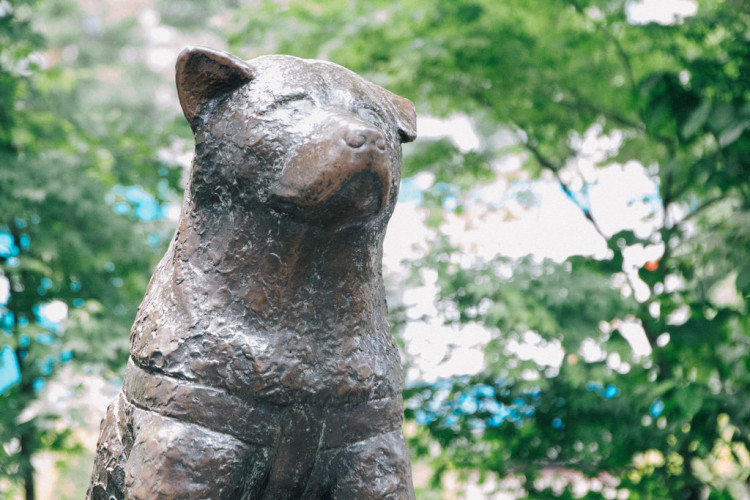 The Hachiko statue in Shibuya, a popular meeting point and symbol of loyalty.
The Hachiko statue in Shibuya, a popular meeting point and symbol of loyalty.
Say “Konichiwa” to Hachiko (the loyal dog statue) near Shibuya Crossing and explore Tokyu Hands department store.
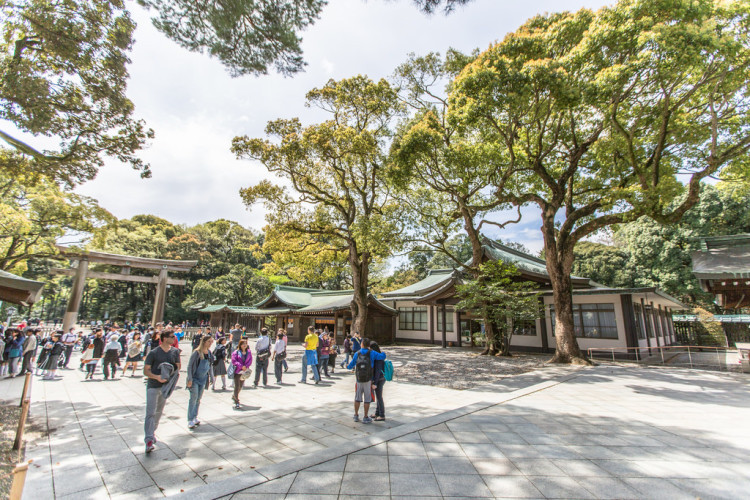 The serene Meiji Shrine in Harajuku, Tokyo, surrounded by trees and traditional architecture.
The serene Meiji Shrine in Harajuku, Tokyo, surrounded by trees and traditional architecture.
 A pathway at Meiji Shrine, lined with wooden plaques and lush greenery.
A pathway at Meiji Shrine, lined with wooden plaques and lush greenery.
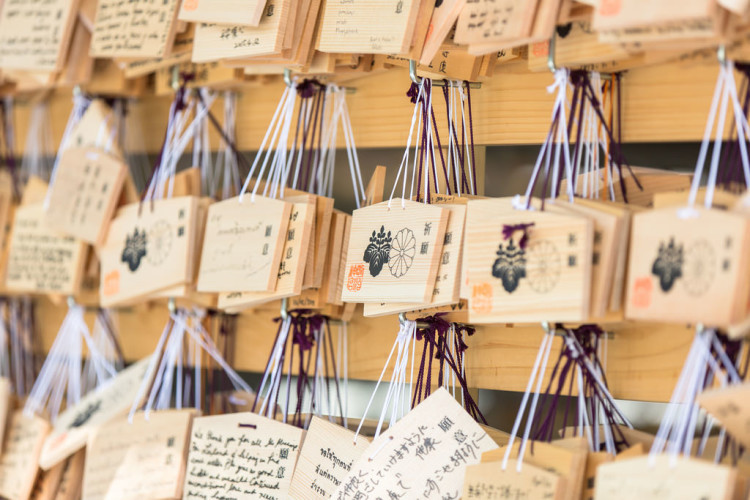 A traditional wooden structure at Meiji Shrine, with intricate details and peaceful surroundings.
A traditional wooden structure at Meiji Shrine, with intricate details and peaceful surroundings.
Don’t miss Meiji Shrine, a Shinto shrine dedicated to Emperor Meiji and Empress Shōken. It’s a great introduction to Japanese shrines and temples. You might witness a traditional Japanese wedding ceremony (I wasn’t so lucky!).
Stop 2: Harajuku
For Japanese street style, visit Harajuku. On Sundays, see Harajuku Girls in elaborate costumes and anime-inspired outfits. Even on weekdays, Harajuku offers a taste of unique Japanese fashion.
Take the Yamanote line to Harajuku Station or walk from Meiji Shrine.
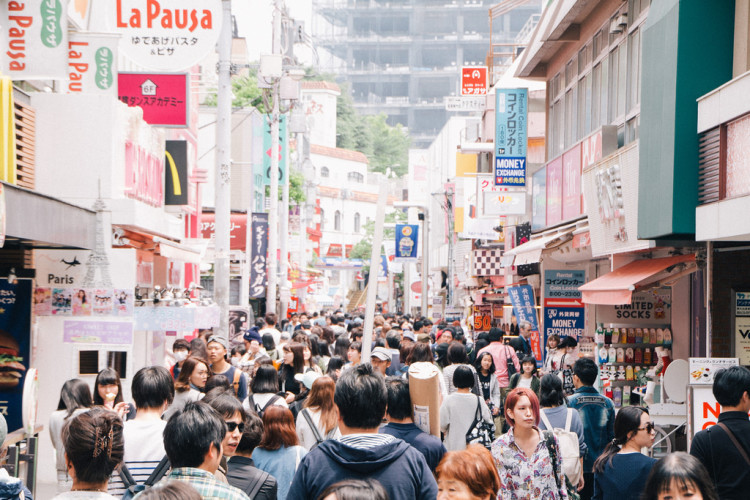 A colorful street in Harajuku, Tokyo, known for its unique fashion and youth culture.
A colorful street in Harajuku, Tokyo, known for its unique fashion and youth culture.
 The Tokyu Plaza Omotesando Harajuku entrance, featuring a kaleidoscope mirror effect.
The Tokyu Plaza Omotesando Harajuku entrance, featuring a kaleidoscope mirror effect.
Stroll down Takeshita Dori, Harajuku’s famous shopping street, filled with quirky stores and cafes. Most shops open around 11 am; you’ll likely arrive around 1 pm.
Try a crepe, Harajuku’s unofficial street food, widely available on Takeshita Dori. We also visited a hedgehog café for a unique and slightly bizarre experience. Harajuku is a must-see for its unique and quirky atmosphere.
Read more: Top Things to do in Harajuku
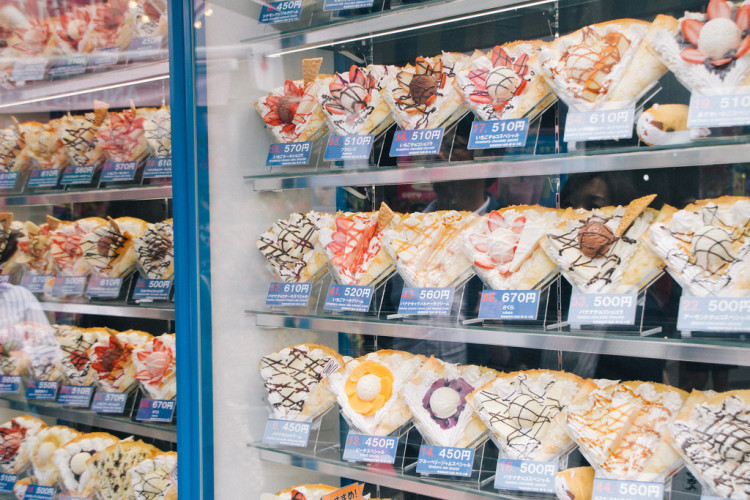 Colorful and decorated crepes, a popular street food in Harajuku, Tokyo.
Colorful and decorated crepes, a popular street food in Harajuku, Tokyo.
Stop 3: Shinjuku
Shinjuku, Tokyo’s largest neighborhood and entertainment hub, offers countless restaurants, shops, and attractions. You could easily spend a whole day here.
We spent an afternoon and evening in Shinjuku and felt it was sufficient to see the highlights.
Many consider the Robot Restaurant a unique, over-the-top experience. Reviews are mixed, so research if it aligns with your interests.
Whether or not you see the Robot Restaurant, visit Omoide Yokocho, also known as Piss Alley. This network of narrow alleyways near Shinjuku Station is packed with tiny eateries serving ramen, soba, sushi, and yakitori. Choose any with open seats – they’re all worth trying.
Consider the free observation deck on the 45th floor of the Tokyo Metropolitan Government Building. Visit Shinjuku Gyoen National Garden (a large park near Shinjuku Station, excellent for cherry blossoms – check closing times, we missed entry by 20 minutes 🙁 ). Find panoramic views from the pedestrian overpass near Shinjuku Station’s northwest corner.
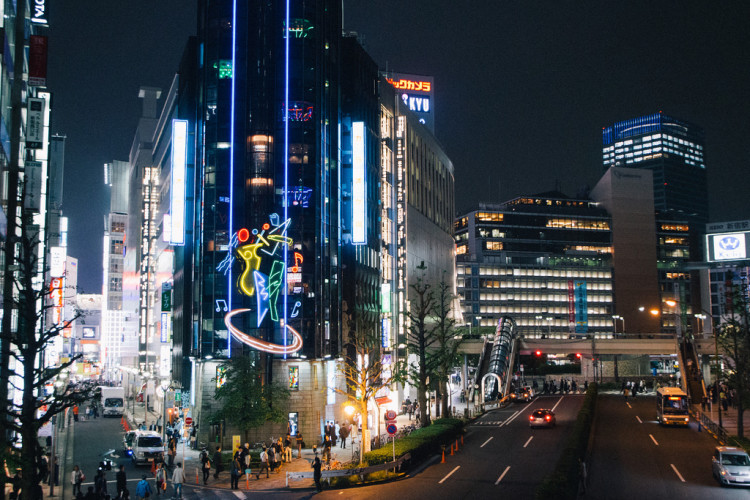 The Shinjuku skyline at night, showcasing skyscrapers and city lights.
The Shinjuku skyline at night, showcasing skyscrapers and city lights.
Day 3: Tokyo Exploration (East Side)
Today, explore traditional Tokyo, including Sensoji Temple and Ueno Park. Enjoy another bird’s-eye view from Tokyo Skytree.
From Shibuya, take the train to Asakusa Station (35-45 min) via JR Yamanote Line to Ginza or Asakusa Line. Buy single tickets – do not activate your JR Pass yet!
Asakusa and Sensoji Temple
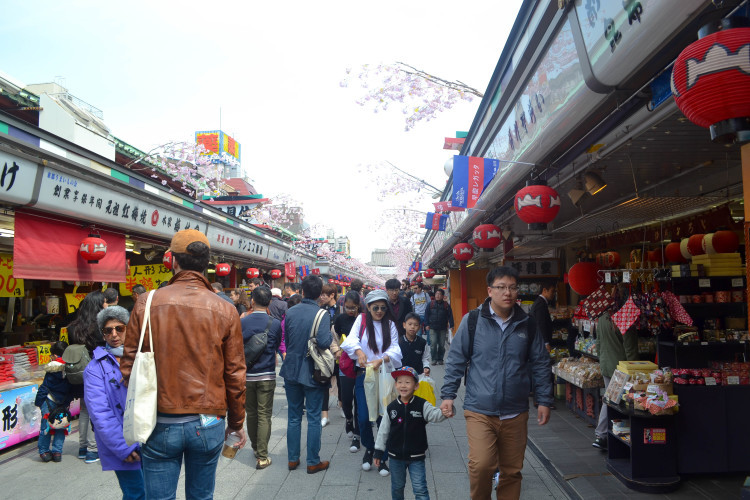 The iconic Kaminarimon Gate at Sensoji Temple in Asakusa, Tokyo.
The iconic Kaminarimon Gate at Sensoji Temple in Asakusa, Tokyo.
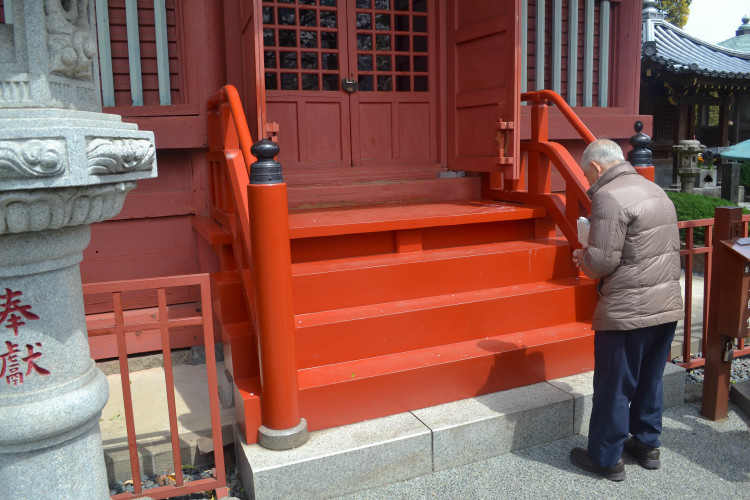 Nakamise-dori street leading to Sensoji Temple, lined with traditional shops and stalls.
Nakamise-dori street leading to Sensoji Temple, lined with traditional shops and stalls.
Asakusa is Tokyo’s spiritual heart. Start at Sensoji Temple, the main attraction, beginning your morning at Kaminarimon Gate.
Walk towards the temple through Nakamise Dori, a historic shopping street. Browse souvenirs and grab Japanese snacks before exploring Sensoji Temple.
Consider drawing Omikuji (fortune paper strips) here. Explore the traditional neighborhoods surrounding Asakusa.
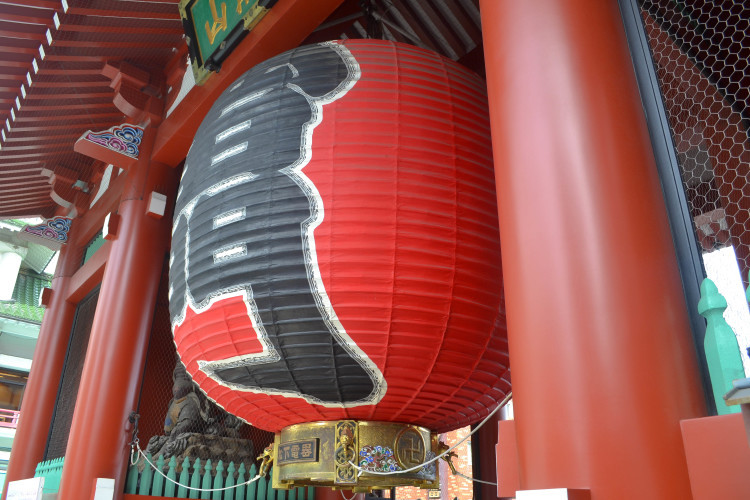 Incense burning at Sensoji Temple, with temple buildings in the background.
Incense burning at Sensoji Temple, with temple buildings in the background.
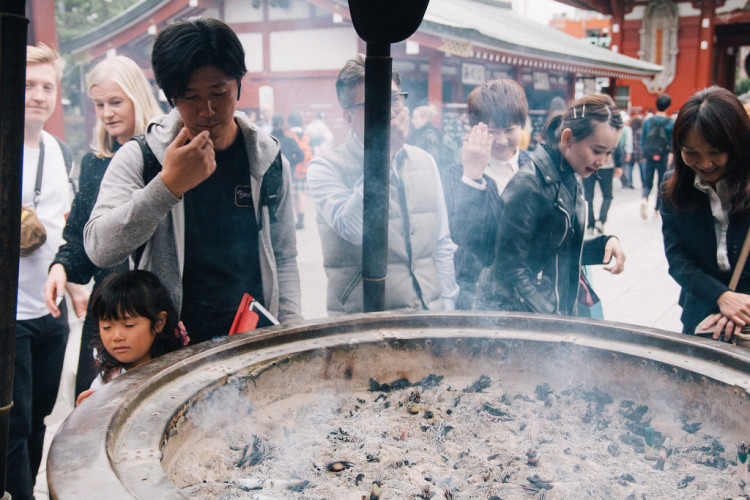 The main hall of Sensoji Temple, with intricate architecture and visitors.
The main hall of Sensoji Temple, with intricate architecture and visitors.
Sumida Park and Tokyo Skytree
If visiting during cherry blossom season, Sumida Park is a must-visit. It’s a fantastic, less crowded spot for cherry blossoms.
Sumida Park, filled with cherry blossoms, is highly recommended! Bring snacks and enjoy a picnic under the blossoms. We had sakura donuts from Mister Donut (widely available).
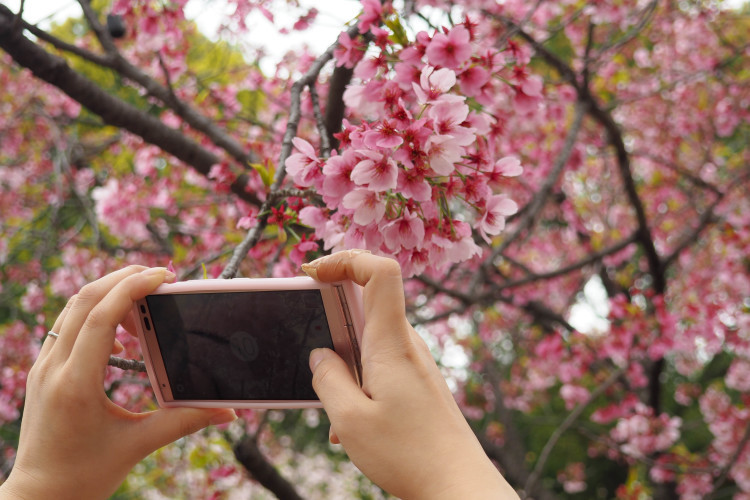 Cherry blossoms in full bloom at Sumida Park, Tokyo, with Tokyo Skytree in the background.
Cherry blossoms in full bloom at Sumida Park, Tokyo, with Tokyo Skytree in the background.
 Visitors enjoying cherry blossoms at Sumida Park, Tokyo, with picnic mats and food.
Visitors enjoying cherry blossoms at Sumida Park, Tokyo, with picnic mats and food.
Next, visit Tokyo Skytree, the world’s tallest tower. At 634m (2,080 feet), it offers panoramic city views from two observation decks. There’s even a glass floor for the daring! Expect queues; plan for time here. Tokyo Skytree is a 20-minute walk or 5-minute train ride from Asakusa.
To avoid lines, book skip-the-line Tokyo Skytree tickets in advance. Upgrade options include the Tembo Galleria.
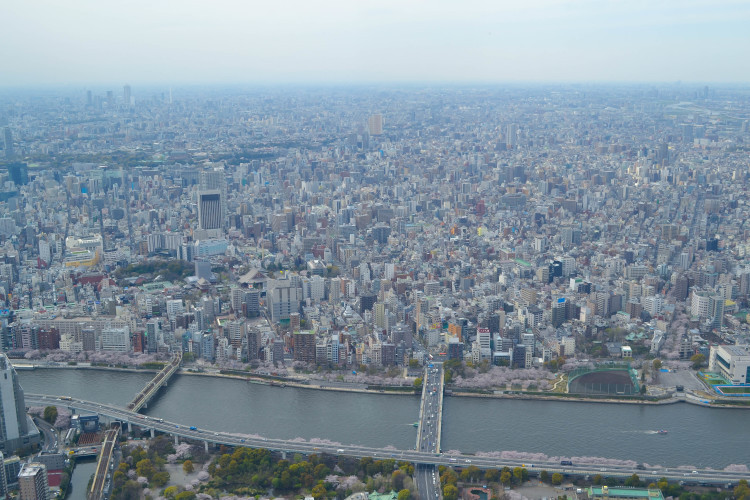 Panoramic view of Tokyo from Tokyo Skytree, showcasing the vast cityscape.
Panoramic view of Tokyo from Tokyo Skytree, showcasing the vast cityscape.
Ueno Park
End the afternoon at Ueno Park, another large public park in central Tokyo, also a popular cherry blossom viewing spot. It features over 1000 cherry trees, temples, shrines, museums, and a zoo.
Take the JR train from Tokyo Skytree to Ueno Park.
Akihabara District
Experience Tokyo’s electric town, Akihabara District! Spend the evening exploring electronics shops, including Yodobashi Akiba, a massive nine-story electronics store.
Akihabara is also the center of Japan’s anime and manga culture. Explore anime and manga stores (be mindful of adult sections if with children).
Spend an afternoon and evening in Akihabara, exploring maid and Gundam cafes, gaming centers (Super Potato Retro Shop for a 90s gaming nostalgia trip), and enjoying the vibrant atmosphere.
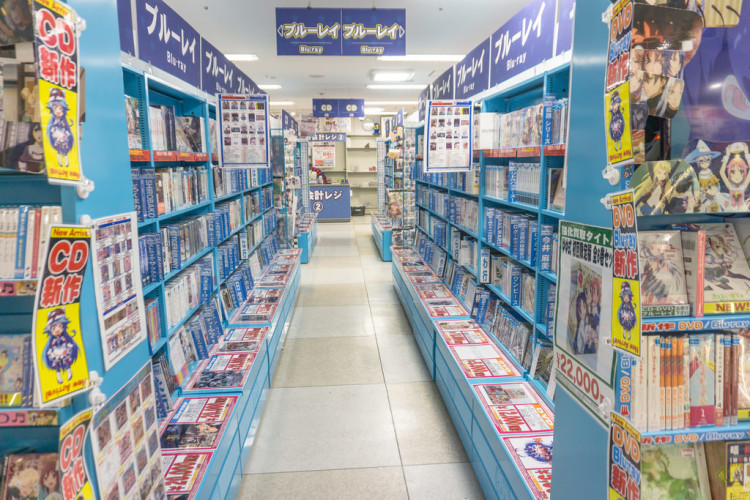 Akihabara District at night, showcasing neon lights and bustling streets.
Akihabara District at night, showcasing neon lights and bustling streets.
Day 4: Day Trip from Tokyo – Choose Your Adventure
Today, activate your JR Pass! Having explored Tokyo, venture out to a nearby area. Numerous day trips from Tokyo are available, depending on your interests.
This 10-day Japan travel itinerary allows for one day trip, but with extra days, you could easily do all three recommended options.
I chose Kamakura due to rainy weather, but Nikko or Hakone would have been preferred in better conditions. With two weeks in Japan, you could include all three.
Three recommended day trips from Tokyo:
1) Kamakura
Kamakura was my chosen day trip, and despite rainy weather, it was worthwhile. [Image shown is on a clear day for optimal view.]
 The Great Buddha of Kamakura, a bronze statue in Kotoku-in Temple.
The Great Buddha of Kamakura, a bronze statue in Kotoku-in Temple.
Visit the Great Buddha of Kamakura (Kotokuin Temple), Kamakura’s most famous attraction, a 44-foot bronze Buddha statue, the second largest in Japan.
Nearby, don’t miss Hase Dera Temple, a beautiful hillside temple overlooking the ocean.
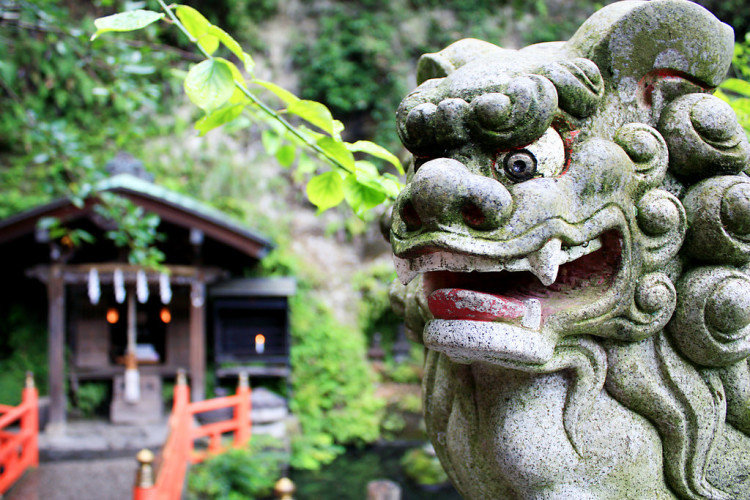 Hase Dera Temple in Kamakura, with its wooden structures and scenic views.
Hase Dera Temple in Kamakura, with its wooden structures and scenic views.
Hokokuji Temple features a bamboo forest, similar to Kyoto’s. On clear days, Mt. Fuji is visible from Kenchoji Temple.
For lunch, head to Komachi-dori, Kamakura’s bustling commercial street. Try Shirasu-don, a local specialty of whitebait rice bowl, widely available.
Consider a Kamakura group tour if you prefer guided exploration. I wish I had booked a tour. Train navigation to Kamakura was slightly confusing and time-consuming. Tours often include tea ceremonies and bay views, which we missed independently. Recommended tours from Tokyo:
- 5 Hour Nature and History Walking Tour: Hiking tour from Kita-Kamakura to Hase-dera Temple, passing historic temples and shrines with panoramic views. Transportation not included.
Powered by GetYourGuide. Become a partner.
2) Nikko
Escape the city for nature in Nikko. Known for ancient moss, stone lanterns, vermillion gates, and towering cedars, Nikko is a popular Japanese destination.
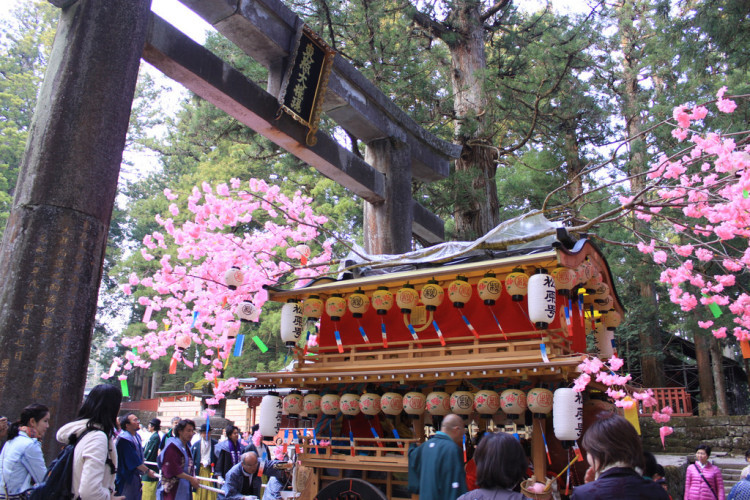 Toshogu Shrine in Nikko, Japan, featuring ornate and colorful architecture.
Toshogu Shrine in Nikko, Japan, featuring ornate and colorful architecture.
Nikko, about two hours north of Tokyo, is home to Toshogu Shrine, Tokugawa Ieyasu’s mausoleum, and numerous temples and shrines. Don’t miss the Shinkyo Bridge, Nikko National Park (on sunny days), Kanman-ga-Fuchi Abyss, and Kegon Falls.
I regret missing Nikko; photos look stunning, giving me a reason to return!
 Shinkyo Bridge in Nikko, Japan, a red arched bridge over a river.
Shinkyo Bridge in Nikko, Japan, a red arched bridge over a river.
For efficient Nikko exploration, consider a group tour covering highlights.
Day Trip Options:
- Nikko: Autumn Leaves and World Heritage Full–Day Tour: Full-day tour by coach to see Nikko’s autumn foliage and World Heritage sites, including natural sights, Senjo-gahara, Kegon Falls, and Nikko Toshogu Shrine. Ideal for autumn visits.
Powered by GetYourGuide. Become a partner.
For longer stays, explore these additional day trips from Tokyo.
3) Hakone
If seeing Mt. Fuji is on your Japan bucket list, Hakone is the recommended day trip.
Hakone offers numerous attractions: Hakone Tozan Cable Car, Hakone Ropeway for views, Owakudani for Mt. Fuji views (on clear days) and a Buddhist altar.
Take a Hakone Sightseeing Cruise and visit the Hakone Open Air Museum. For the brave, try a black egg!
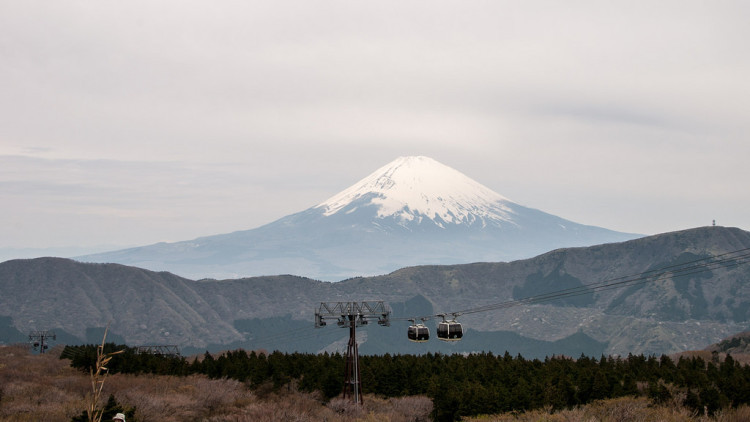 Mt. Fuji viewed from Hakone, with Lake Ashi in the foreground.
Mt. Fuji viewed from Hakone, with Lake Ashi in the foreground.
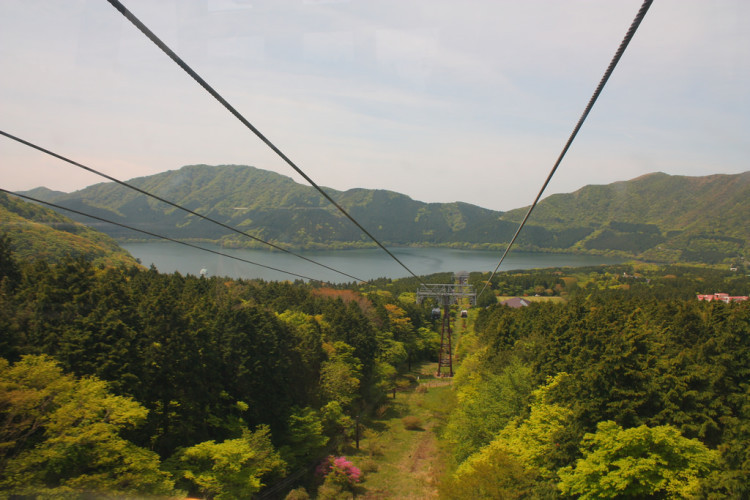 The Hakone Ropeway gondolas traveling over volcanic hot springs.
The Hakone Ropeway gondolas traveling over volcanic hot springs.
 The Hakone Open Air Museum, featuring sculptures against a mountain backdrop.
The Hakone Open Air Museum, featuring sculptures against a mountain backdrop.
Consider Hakone day tours from Tokyo for hassle-free transport and planning. Recommended tours:
- From Tokyo: Mt. Fuji and Hakone Tour with Bullet Train: Day trip with Mt. Fuji views, Lake Ashi cruise, Hakone Ropeway to Mt. Komagatake, Hakone hot springs, and bullet train return to Tokyo.
Note that Mt. Fuji visibility is weather-dependent. Winter months offer better visibility chances. If clouds are heavy, consider Nikko or Kamakura instead.
Powered by GetYourGuide. Become a partner.
Day 5: Bullet Train to Kyoto & Arashiyama Exploration
First Bullet Train Experience!
Green JR Pass holders require seat reservations. Reserve when exchanging your JR voucher or the night before Kyoto travel. Don’t wait until the morning, as reservation desks may not be open early enough.
Start early, grab breakfast at the station, and take a 7:00/7:30 am bullet train from Tokyo Station (transfer at Shinagawa Station may be needed) to Kyoto.
An early train gets you to Kyoto around 10:30 am, essential for seeing Kyoto sites today. Upon arrival, store luggage in coin lockers (¥500-¥900 for two suitcases for the day) and begin exploring!
Kyoto Public Transportation Note: Unlike Tokyo’s trains, Kyoto primarily uses buses. Bus travel is slower than Tokyo trains. Factor in extra travel time. Enjoy the Kyoto bus experience to observe local life.
Arashiyama Area
Take the bus to Saga-Arashiyama Station for a few hours in Arashiyama. First, visit Tenryu-Ji Temple and its zen garden, featuring beautiful, well-labeled plants and flowers, including Japanese wisteria.
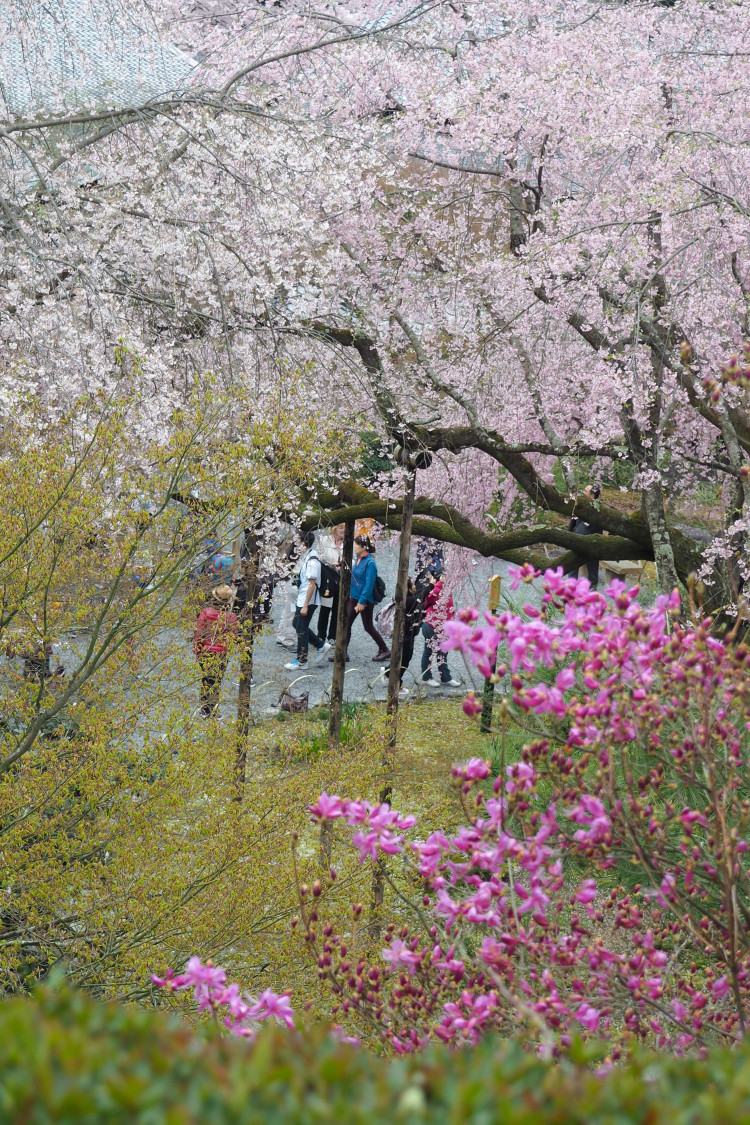 Intricate wooden details of Tenryu-Ji Temple in Arashiyama, Kyoto.
Intricate wooden details of Tenryu-Ji Temple in Arashiyama, Kyoto.
Leaving the garden, enter the Arashiyama Bamboo Grove. Walking through this grove is a quintessential Kyoto experience.
The bamboo grove is smaller than expected, a ~15-minute walk, but excellent for photography. Walk slowly and look up at the towering bamboo. Bring a wide-angle lens or GoPro to capture more of the grove in photos.
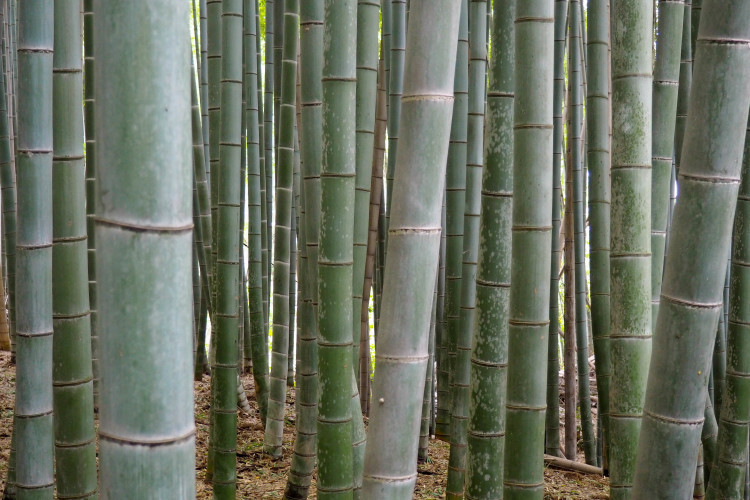 Sunlight filtering through the Arashiyama Bamboo Grove in Kyoto, creating a magical atmosphere.
Sunlight filtering through the Arashiyama Bamboo Grove in Kyoto, creating a magical atmosphere.
Before Monkey Park (next!), you’ll find eateries and a beautiful emerald green lake, a good photo spot. Enjoy vending machine coffees/teas.
Read more: Top Things to do in Kyoto and Attractions
 A scenic lake in Arashiyama, Kyoto, surrounded by greenery and traditional buildings.
A scenic lake in Arashiyama, Kyoto, surrounded by greenery and traditional buildings.
Next, walk to Iwatayama Monkey Park. It’s a 15-20 minute uphill walk, but worth it! Google Maps directions to the entrance are inaccurate.
Park entrance is near the orange shrine gate at the south side of Togetsu-kyo Bridge. Look for a cartoon monkey picture.
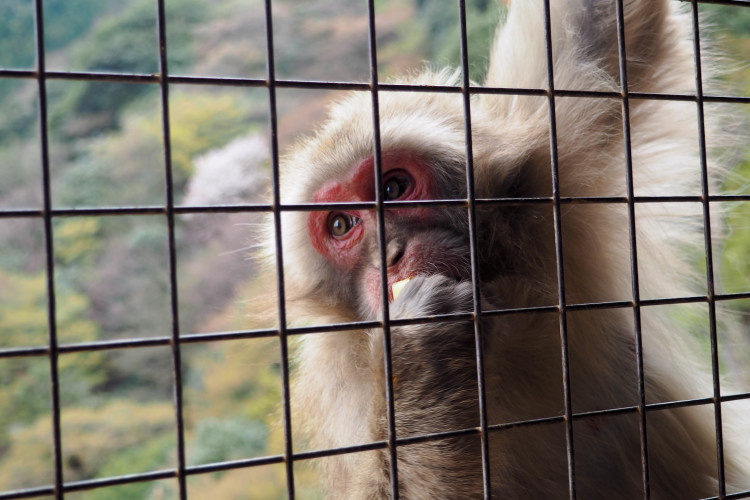 Japanese Macaques (snow monkeys) at Iwatayama Monkey Park in Arashiyama, Kyoto.
Japanese Macaques (snow monkeys) at Iwatayama Monkey Park in Arashiyama, Kyoto.
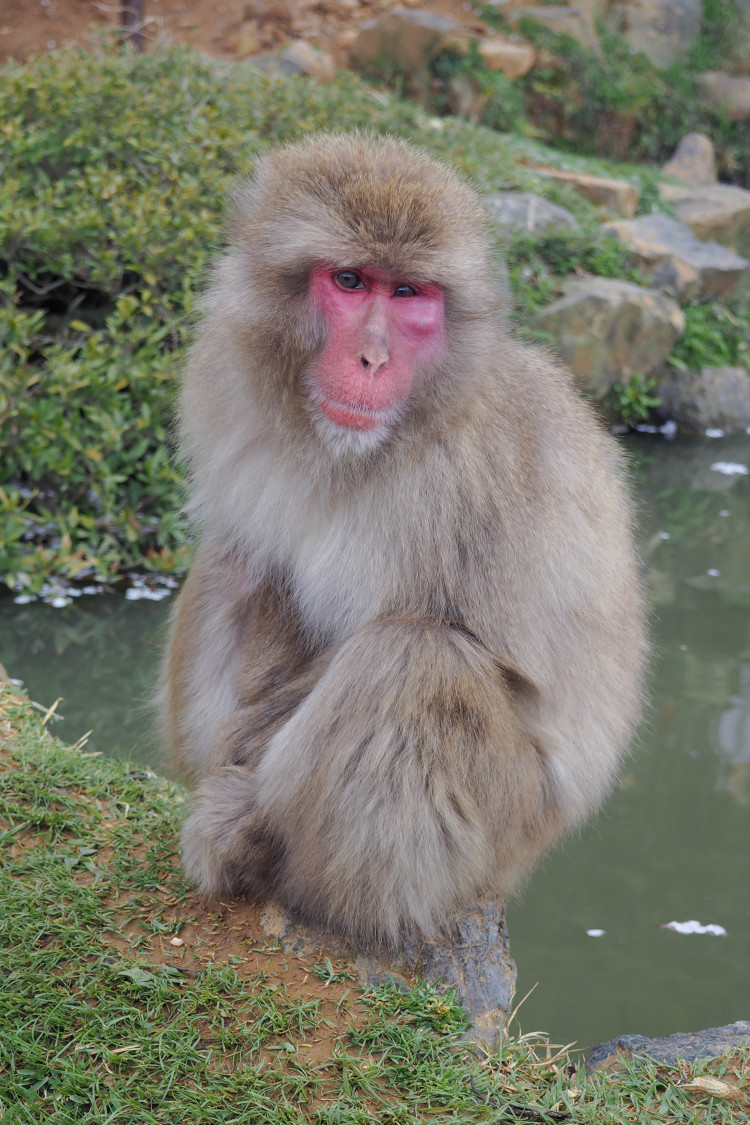 Panoramic view of Kyoto from Iwatayama Monkey Park, overlooking the city and mountains.
Panoramic view of Kyoto from Iwatayama Monkey Park, overlooking the city and mountains.
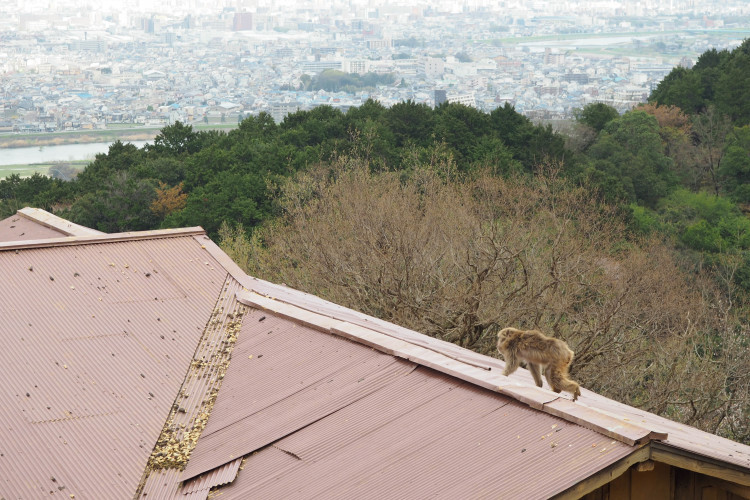 A Japanese Macaque monkey sitting on a railing at Iwatayama Monkey Park, Kyoto.
A Japanese Macaque monkey sitting on a railing at Iwatayama Monkey Park, Kyoto.
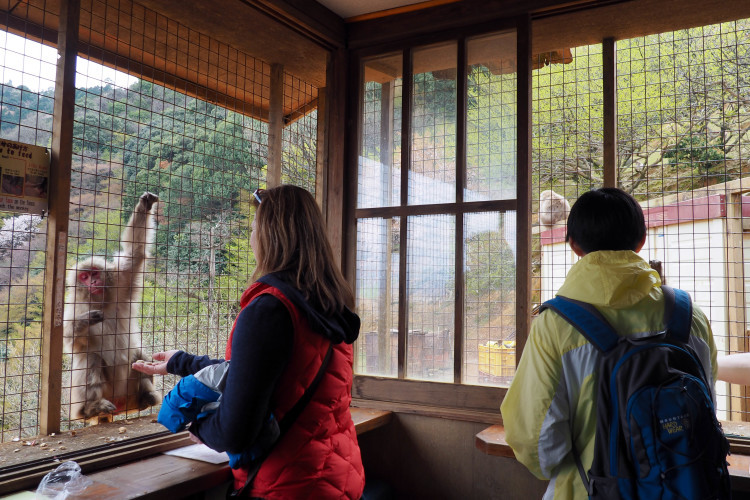 Monkeys interacting with visitors at Iwatayama Monkey Park, Kyoto.
Monkeys interacting with visitors at Iwatayama Monkey Park, Kyoto.
The park is a nice change from temples, fun to feed monkeys for ¥100. Great Kyoto view from the park. Monkeys roam freely; humans are enclosed when feeding them, for safety.
We could have spent hours with monkeys and the view, but it was time for the Golden Pavilion!
Golden Pavilion (Kinkaku-ji)
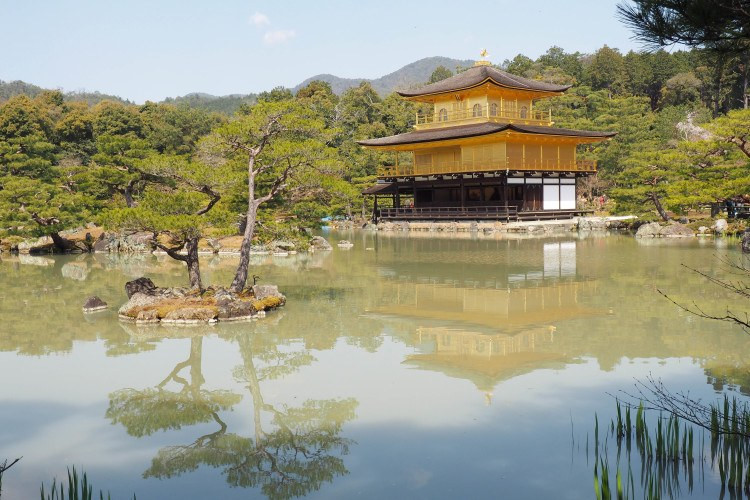 The Golden Pavilion (Kinkaku-ji) in Kyoto, reflecting in the pond.
The Golden Pavilion (Kinkaku-ji) in Kyoto, reflecting in the pond.
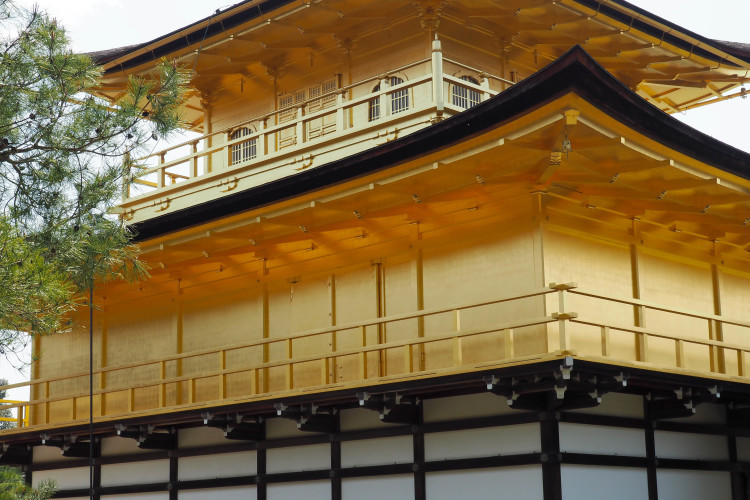 Close-up view of the Golden Pavilion (Kinkaku-ji) in Kyoto, showcasing its golden exterior.
Close-up view of the Golden Pavilion (Kinkaku-ji) in Kyoto, showcasing its golden exterior.
If time allows, bus to the Golden Pavilion, an impressive gold-covered temple reflected in a pond. A top Kyoto attraction.
Try Japanese flavored ice cream here, like green matcha or black sesame. Expect crowds, but it’s worth it.
Powered by GetYourGuide. Become a partner.
Collect luggage from Kyoto Station lockers before heading to your hotel/Airbnb.
Day 6: Kyoto Cultural Immersion
Nishiki Market
Start at Nishiki Market, known for diverse food stalls with Japanese cuisine and treats.
Stroll through the market, trying various Japanese foods. A great place to sample unique dishes – be adventurous!
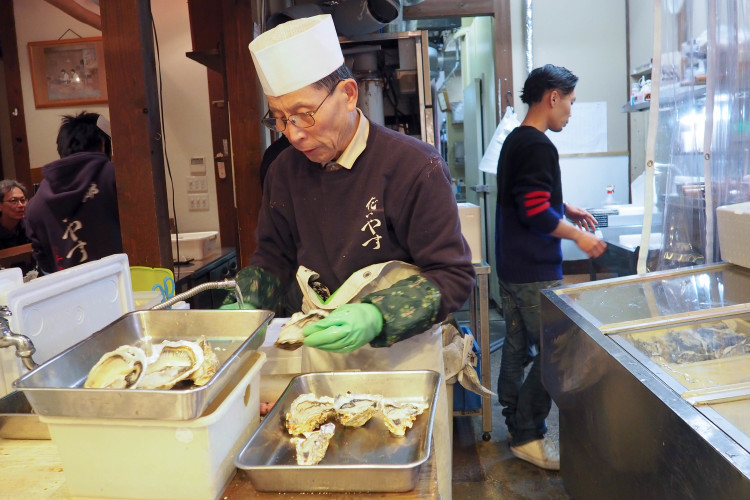 Pickled vegetables and tsukemono at Nishiki Market, Kyoto.
Pickled vegetables and tsukemono at Nishiki Market, Kyoto.
 Fresh seafood and fish at Nishiki Market, Kyoto.
Fresh seafood and fish at Nishiki Market, Kyoto.
Don’t leave without trying tako tamago, candied baby octopus with quail egg. Tastes better than it sounds!
For cute animal donuts, find Floresta Donuts in Nishiki Market. Their animal donuts are incredibly cute and delicious.
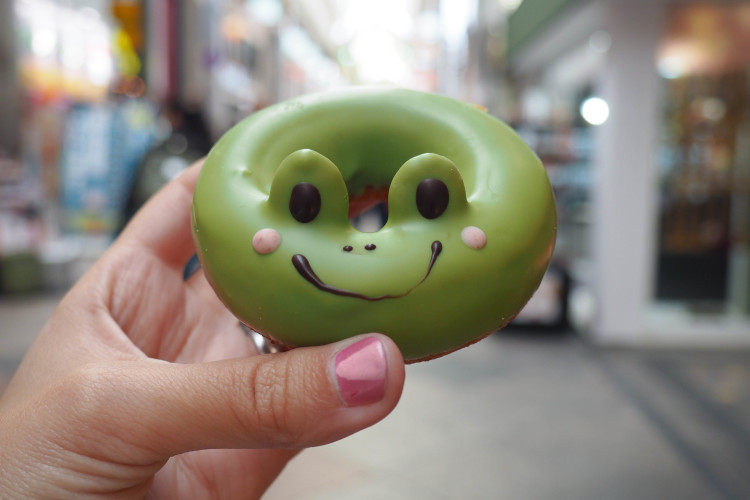 Animal-shaped donuts from Floresta Donuts at Nishiki Market, Kyoto.
Animal-shaped donuts from Floresta Donuts at Nishiki Market, Kyoto.
Gion District
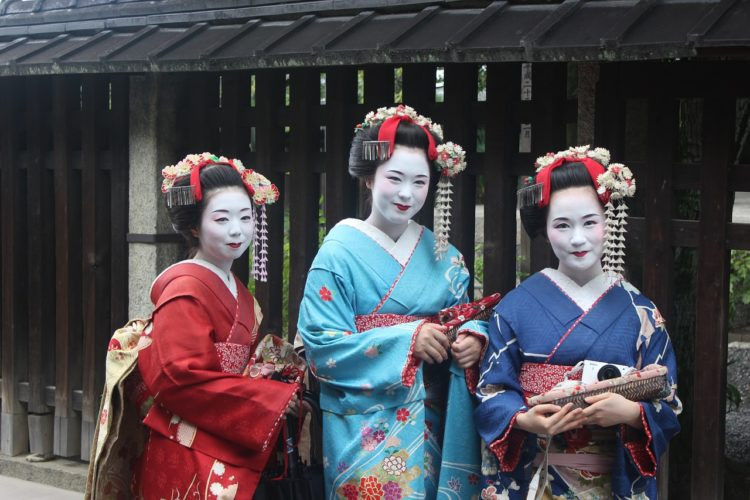 A Geisha walking in Gion district, Kyoto, in traditional attire.
A Geisha walking in Gion district, Kyoto, in traditional attire.
After Nishiki Market, walk to Gion, Kyoto’s geisha district. You might spot a real geisha, though they are discreet.
If you see a geisha, be respectful; don’t follow or photograph them invasively.
Higashiyama District
End the day in Higashiyama District, Kyoto’s hub of famous shrines and temples. One of my favorite areas in Kyoto.
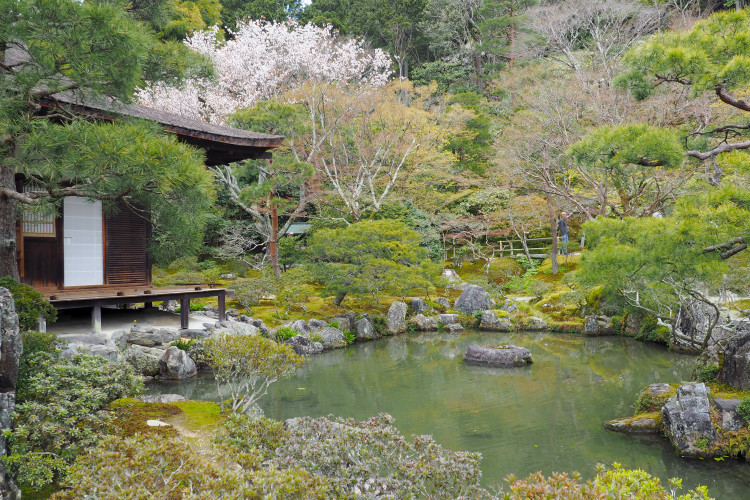 Traditional street scene in Higashiyama District, Kyoto, with wooden buildings and shops.
Traditional street scene in Higashiyama District, Kyoto, with wooden buildings and shops.
Walk down Sannenzaka and Ninenzaka, the district’s most beautiful streets with souvenir shops and eateries. It gets crowded, so visit closer to dusk for a less crowded experience. Still busy, but less so than midday. Try a sakura cream puff here.
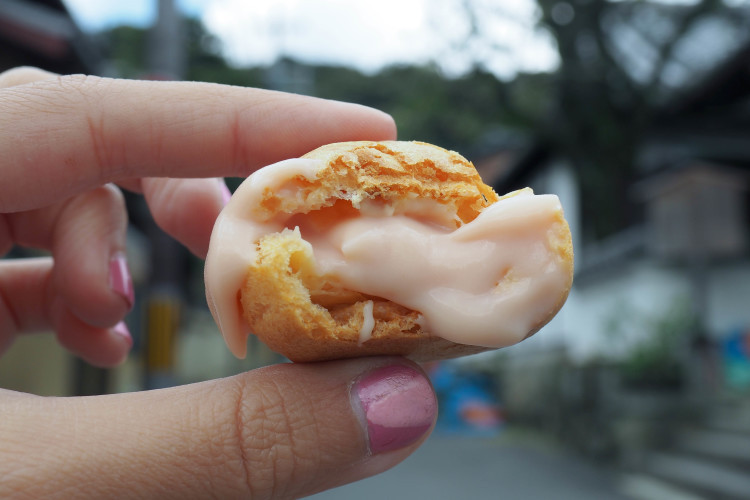 Sannenzaka street in Higashiyama District, Kyoto, lined with traditional shops and buildings.
Sannenzaka street in Higashiyama District, Kyoto, lined with traditional shops and buildings.
Kiyomizu-dera Temple, a UNESCO site, is next. Busy, but the view over trees is stunning, especially during cherry blossom season. Try an onigiri maki.
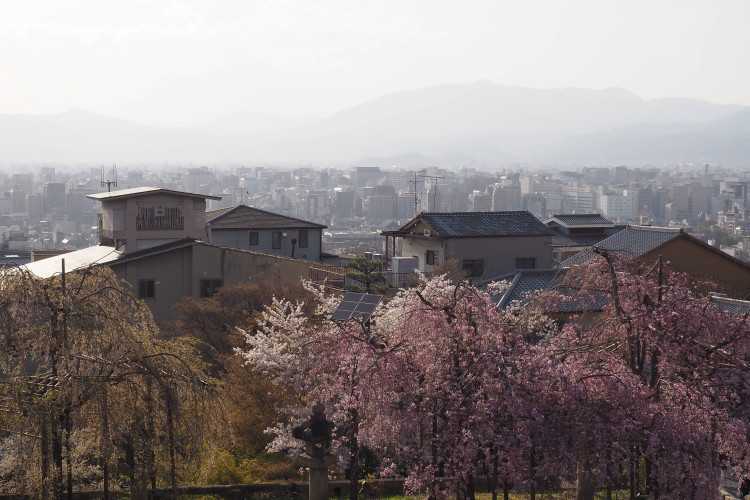 Kiyomizu-dera Temple in Kyoto, perched on a hillside with wooden stage.
Kiyomizu-dera Temple in Kyoto, perched on a hillside with wooden stage.
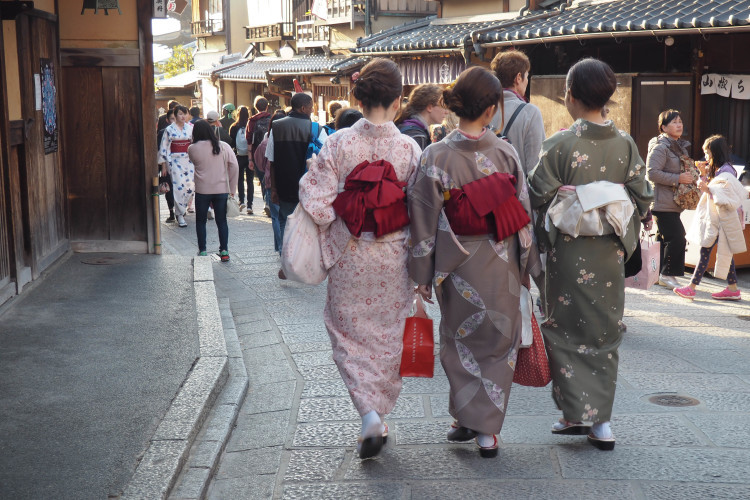 Wooden structures and details of Kiyomizu-dera Temple, Kyoto.
Wooden structures and details of Kiyomizu-dera Temple, Kyoto.
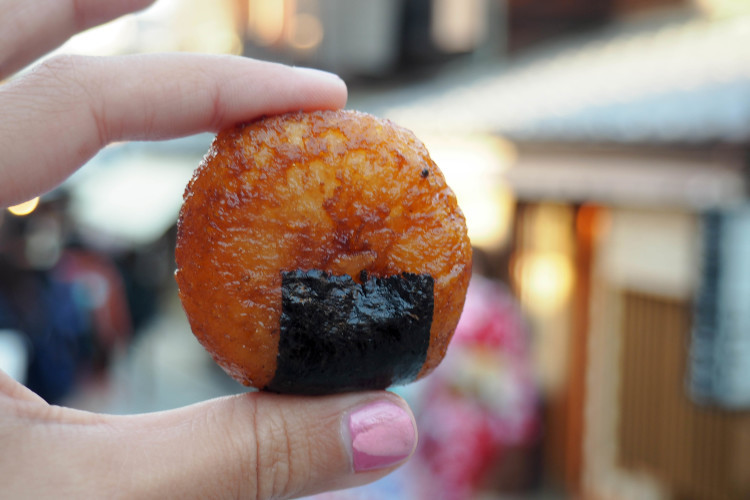 View from Kiyomizu-dera Temple, Kyoto, overlooking trees and the city.
View from Kiyomizu-dera Temple, Kyoto, overlooking trees and the city.
Finish the day by walking part of the Philosopher’s Path (Tetsugaku-no-michi), a cherry blossom-lined path along a canal.
It ends at the Silver Pavilion. Less ornate than the Golden Pavilion, but still impressive.
 A picturesque temple in Kyoto, surrounded by lush trees and traditional Japanese architecture.
A picturesque temple in Kyoto, surrounded by lush trees and traditional Japanese architecture.
Day 7: Nara Deer & Osaka Food Tour
Day trips today, combining Nara and Osaka! From Kyoto Station, take the JR Nara Line (~1 hour express train) to Nara. Then, head to Osaka for food after Nara’s temples.
Powered by GetYourGuide. Become a partner.
Nara
Interact with deer in Nara Park, found throughout the area. Deer crackers sold are for deer, not humans!
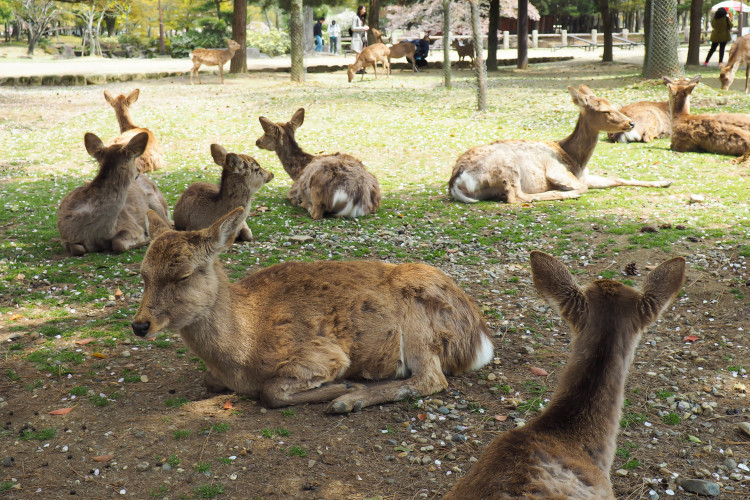 Deer roaming freely in Nara Park, Japan, with Todai-ji Temple in the background.
Deer roaming freely in Nara Park, Japan, with Todai-ji Temple in the background.
 Close-up of a friendly deer in Nara Park, Japan, interacting with a visitor.
Close-up of a friendly deer in Nara Park, Japan, interacting with a visitor.
Temples to see: Todai-ji (UNESCO site with giant Buddha), Kasuga Taisha Shrine (Nara’s most important shrine), Kofukuiji Temple, and Gangou-ji Temple. If temple-fatigued, skip a temple or two and head to Osaka earlier.
Tip: Get the Nara Kotsu one-day bus pass (¥500), a wooden plaque you wear. It covers buses to major Nara attractions.
Osaka
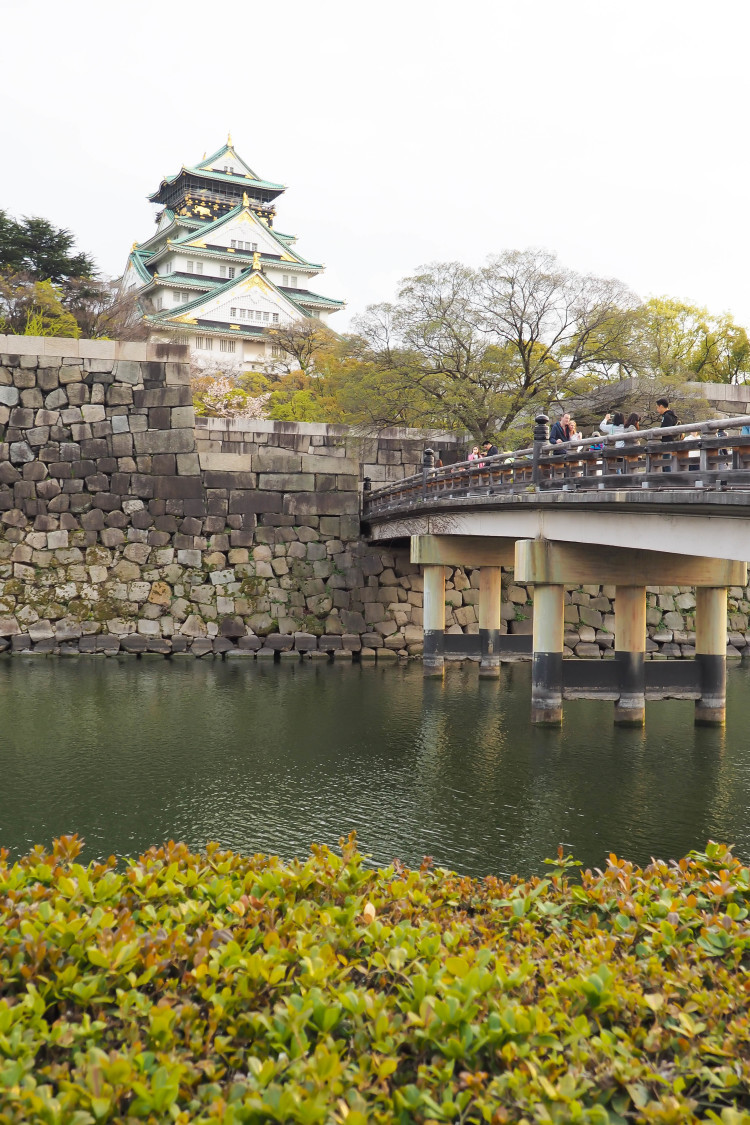 Osaka Castle, one of Japan's most famous landmarks, with cherry blossoms around it.
Osaka Castle, one of Japan's most famous landmarks, with cherry blossoms around it.
Head to Osaka for the afternoon and evening! Osaka is often skipped, but it’s fantastic! Don’t miss it.
First, visit Osaka Castle, one of Japan’s most famous landmarks. Get off at Osakajokoen Station. Castle may be closed by arrival depending on Nara time (last entry 4:30 pm in April, later in summer), but the exterior is worth seeing.
Next, Dotonbori Street! A lively area with crowds, shops, and eateries. Admire the moving animal billboards.
Osaka is Japan’s (and maybe the world’s) food capital. Eat everything in sight (save room for Kobe beef dinner). Try regional dishes: okonomiyaki, takoyaki (fried octopus balls), udon, and hiyashi ame ginger drink.
Rule of thumb: Long lines mean amazing food. Wait for it!
For shopping, visit Shinsaibashi, Osaka’s shopping district. We focused on food instead. 😉
Dinner suggestion: Tsurugyu, specializing in Kobe beef, fresh and reasonably priced. Expect ~¥5,000 per person (drink included). Reservations recommended, though we got lucky at the bar. Don’t rely on walk-in availability.
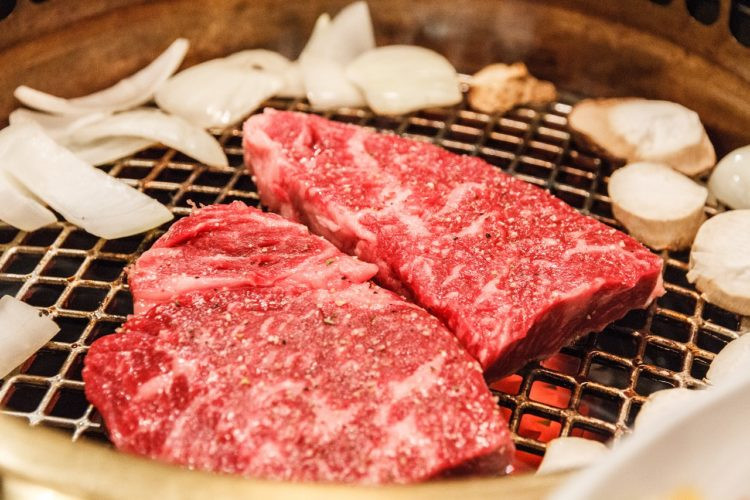 Kobe beef being grilled, a delicacy in Japan, particularly in Kobe and Osaka.
Kobe beef being grilled, a delicacy in Japan, particularly in Kobe and Osaka.
Powered by GetYourGuide. Become a partner.
Day 8: Miyajima Island & Hiroshima History
Prepare for another packed day. It’s a long travel day, but on a clear, sunny day, Miyajima is stunning and worth it.
Early bullet train to Hiroshima (~2 hours from Kyoto Station), then local JR train to Miyajimaguchi Station, then JR ferry to Miyajima. All covered by the JR Pass.
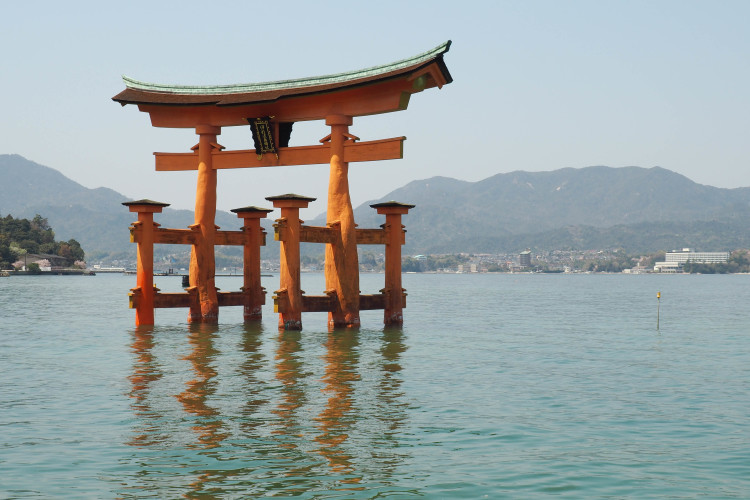 The iconic floating torii gate of Itsukushima Shrine in Miyajima, Japan.
The iconic floating torii gate of Itsukushima Shrine in Miyajima, Japan.
Visit Miyajima or Hiroshima first, but Miyajima is best at high tide to see the “floating” gate. Check tide schedules online.
Miyajima Island
For Miyajima first (tide-dependent), take an 8 am bullet train from Kyoto Station, reaching Miyajima around 11 am.
Head straight to the torii gate (after deer interaction; yes, deer are here too and very friendly, but watch your food).
Take many photos; it’s incredibly beautiful! Explore the floating Itsukushima Shrine, unique among Japanese shrines/temples.
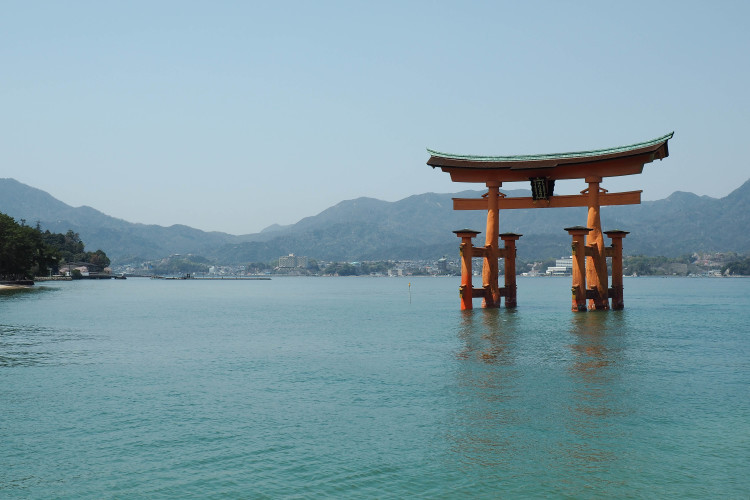 Itsukushima Shrine on Miyajima Island, Japan, at high tide, appearing to float on water.
Itsukushima Shrine on Miyajima Island, Japan, at high tide, appearing to float on water.
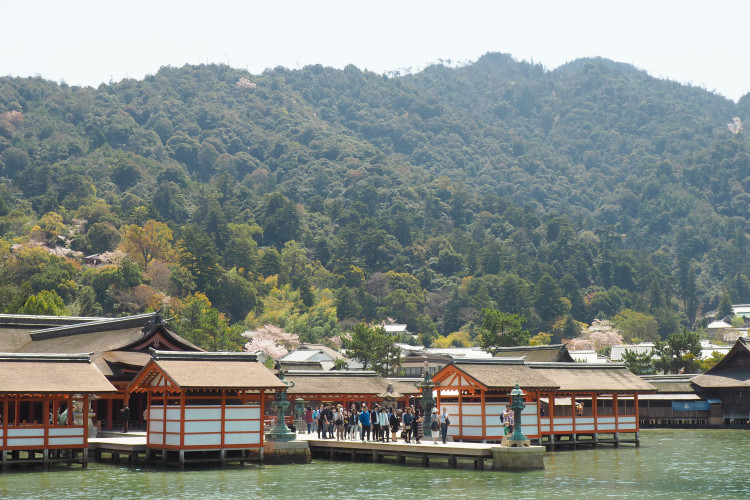 Close-up of the torii gate of Itsukushima Shrine at high tide, Miyajima Island.
Close-up of the torii gate of Itsukushima Shrine at high tide, Miyajima Island.
 Deer walking near Itsukushima Shrine on Miyajima Island, Japan.
Deer walking near Itsukushima Shrine on Miyajima Island, Japan.
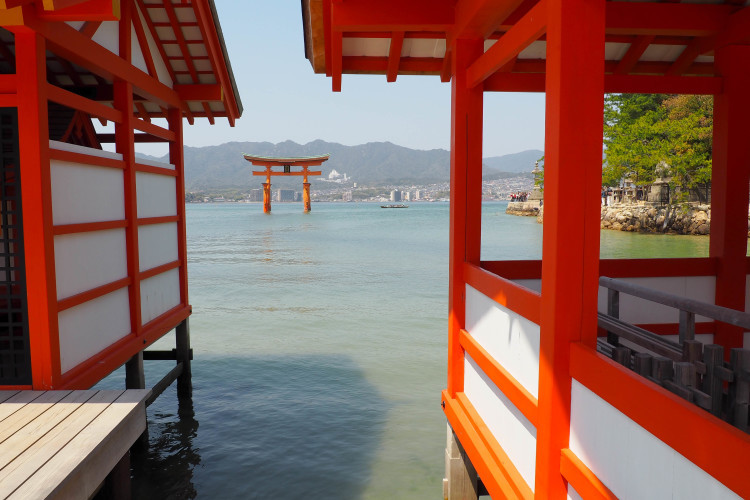 Visitors walking around Itsukushima Shrine on Miyajima Island, Japan, at high tide.
Visitors walking around Itsukushima Shrine on Miyajima Island, Japan, at high tide.
For panoramic views, take the Miyajima Ropeway (~15 minutes, ~$17 roundtrip) to the top of Mt. Misen. A free bus at Miyajima Island base takes you to the ropeway station if tired.
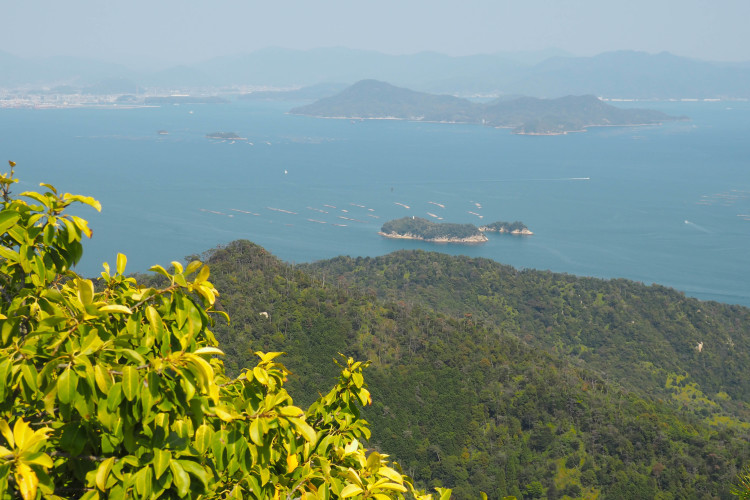 Panoramic view from Mt. Misen, Miyajima Island, Japan, overlooking islands and sea.
Panoramic view from Mt. Misen, Miyajima Island, Japan, overlooking islands and sea.
Before the ferry back, get ice cream (green tea or black sesame!). Perfect on a sunny day.
Hiroshima
Ferry back to Miyajimaguchi Station, then JR train to Hiroshima. Use the Hiroshima Sightseeing Hop-On, Hop-Off Loop Bus “Meipuru-pu” for easy Hiroshima transport – free for JR Pass holders.
Take the sightseeing bus to Hiroshima Castle, then to the A-Bomb Dome, Children’s Peace Monument, and Peace Memorial Museum and Park. Museum was closed by our arrival, but we explored memorials and paid respects.
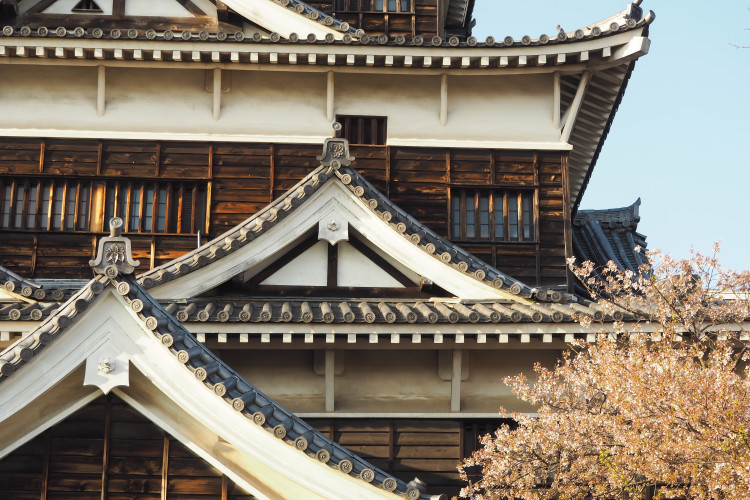 The A-Bomb Dome in Hiroshima Peace Memorial Park, a stark reminder of history.
The A-Bomb Dome in Hiroshima Peace Memorial Park, a stark reminder of history.
 Children's Peace Monument in Hiroshima Peace Memorial Park, with paper cranes.
Children's Peace Monument in Hiroshima Peace Memorial Park, with paper cranes.
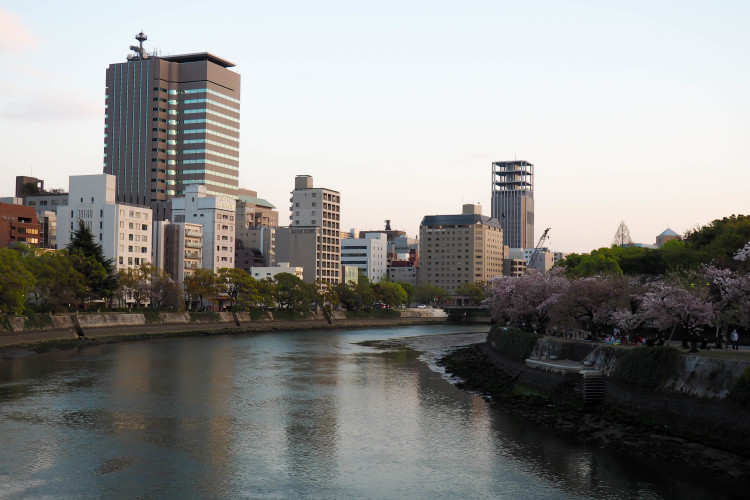 Hiroshima Peace Memorial Park, a tranquil space for reflection and remembrance.
Hiroshima Peace Memorial Park, a tranquil space for reflection and remembrance.
End the long day eating okonomiyaki at Okonomimura, a multi-level building with many small stalls selling various okonomiyaki styles. We took a bullet train back around 8:30/9 pm, reaching Kyoto around 11 pm. Long day indeed. 😉
 Okonomiyaki being cooked at Okonomimura in Hiroshima, a local specialty pancake.
Okonomiyaki being cooked at Okonomimura in Hiroshima, a local specialty pancake.
Powered by GetYourGuide. Become a partner.
Day 9: Kyoto Morning & Return to Tokyo
Last day in Kyoto! Visit anything missed, like Fushimi Inari Shrine. Store bags in Kyoto Station coin lockers before starting the day (remember to collect them before the Tokyo bullet train!).
Morning/Afternoon in Kyoto
1. Fushimi Inari Shrine (Taisha): ARRIVE EARLY! Don’t skip Fushimi Inari Shrine! Take the JR Line (Nara or Keihan Main) from Kyoto to Inari Station.
The shrine has over 10,000 orange-red torii gates arching over a scenic ~2-hour walking trail. You needn’t do the whole trail, but go beyond the initial section, which is most crowded.
Notice fox statues along the shrine grounds, considered Inari’s messengers. Try inari sushi. A highlight of my 10 days in Japan.
Read more: Best things to do in Kyoto
 A vibrant street scene in Japan, showcasing the blend of modern and traditional elements.
A vibrant street scene in Japan, showcasing the blend of modern and traditional elements.
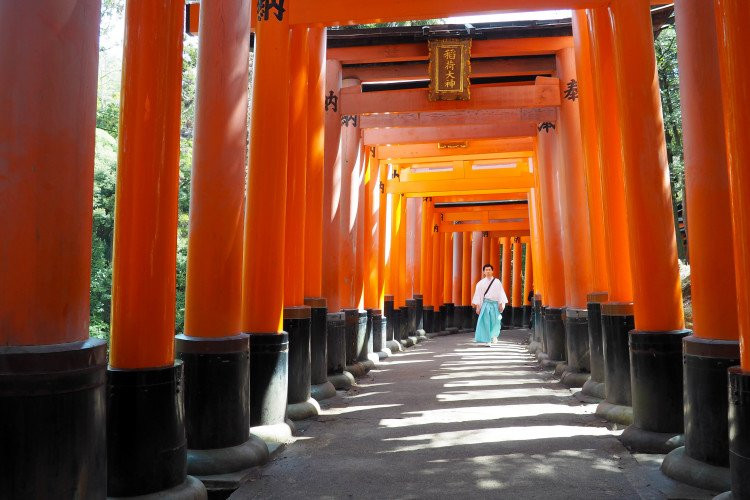 Pathway through the torii gates at Fushimi Inari Shrine, Kyoto, with sunlight streaming through.
Pathway through the torii gates at Fushimi Inari Shrine, Kyoto, with sunlight streaming through.
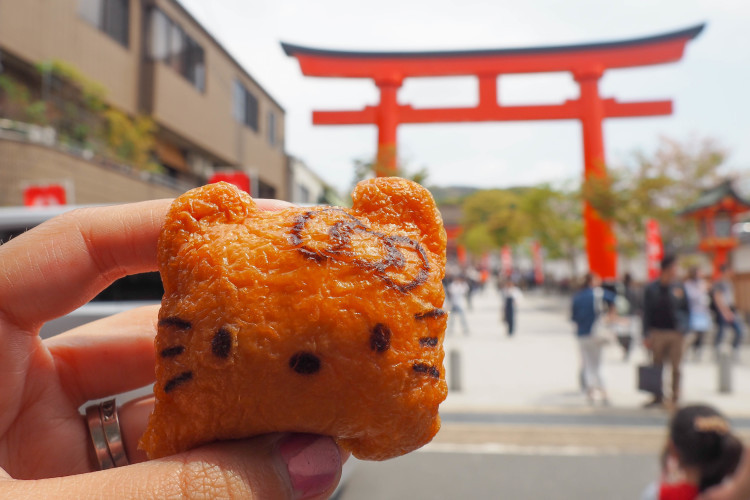 Close-up of torii gates at Fushimi Inari Shrine, Kyoto, with kanji inscriptions.
Close-up of torii gates at Fushimi Inari Shrine, Kyoto, with kanji inscriptions.
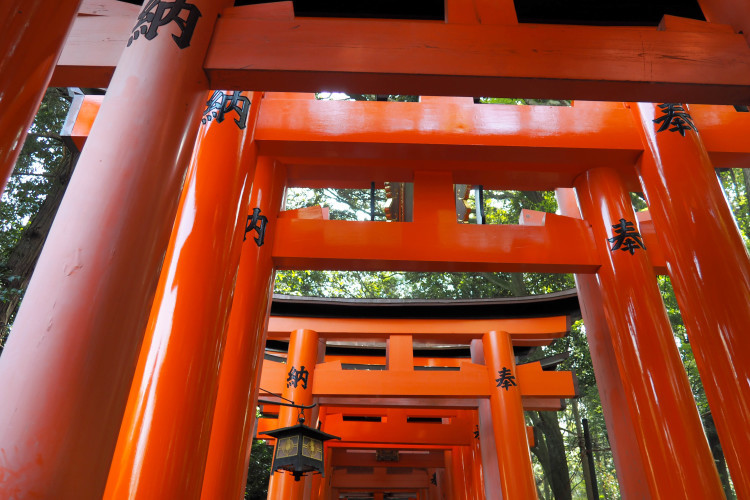 Fox statues at Fushimi Inari Shrine, Kyoto, considered messengers of the deity Inari.
Fox statues at Fushimi Inari Shrine, Kyoto, considered messengers of the deity Inari.
2. Nijo Castle: One of Kyoto’s most popular and impressive sites, great for a final Kyoto morning walk. Large grounds with fortifications, a castle, moat, and gardens.
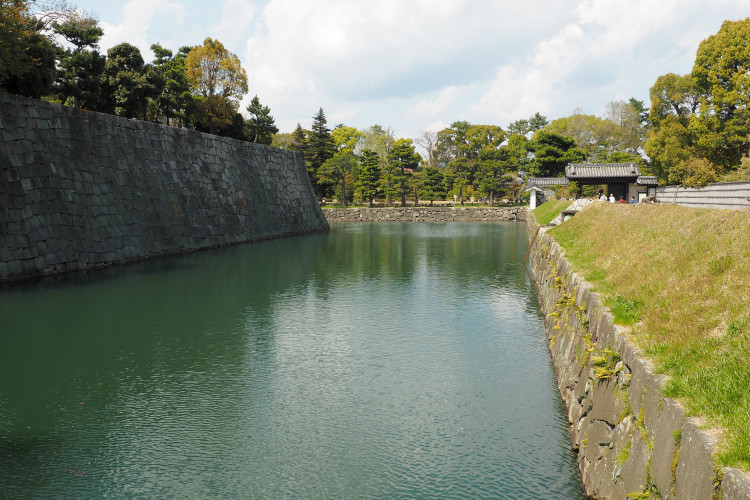 Nijo Castle in Kyoto, a UNESCO World Heritage site, with traditional Japanese architecture.
Nijo Castle in Kyoto, a UNESCO World Heritage site, with traditional Japanese architecture.
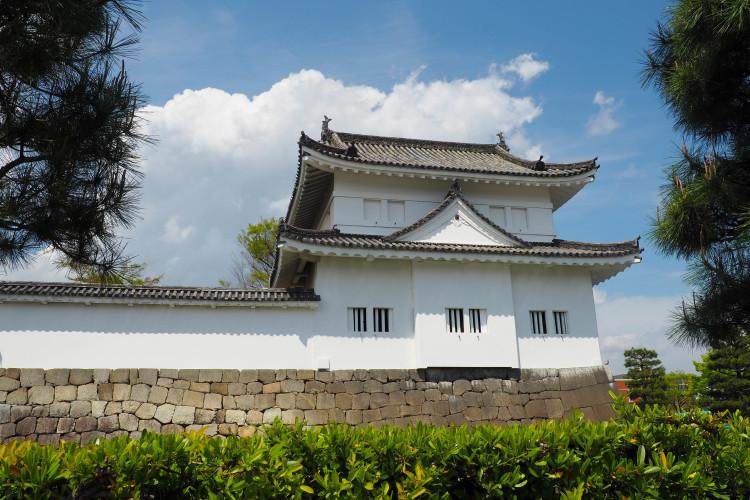 Gardens and stone walls at Nijo Castle, Kyoto, showcasing Japanese landscape design.
Gardens and stone walls at Nijo Castle, Kyoto, showcasing Japanese landscape design.
Inari Shrine to Nijo Castle: Return to Kyoto Station, then take the JR Sagano train to Nijo stop.
3. To-Ji Garden and Temple: Optional gardens near Kyoto station (15-minute walk). If tired, consider skipping. We skipped it due to tiredness. If you go, see Japan’s tallest wooden pagoda, a garden with koi pond, and cherry blossoms. Maybe next time for me!
Bullet Train Back to Tokyo
After Kyoto activities, take the Shinkansen (bullet train) back to Tokyo!
Kyoto to Tokyo bullet train is ~3 hours. For dinner, get bento boxes to eat on the train. Many stalls in the station sell bento boxes, perfect for the train ride.
For the last Tokyo night and next day’s Narita Airport train, stay in the Ginza area, 1-2 train stops from Tokyo Station. Explore Ginza the next morning before the airport.
Recommended hotels in Ginza:
- Mid-Line: Solaria Nishitetsu Hotel Ginza (chic upscale hotel at good rates, great location).
Day 10: Sushi Breakfast & Departure
Before heading out, check out of your hotel (avoid rush for mid-morning checkout) and ask them to store bags (collect later before airport).
Sushi Breakfast at Tsukiji Market
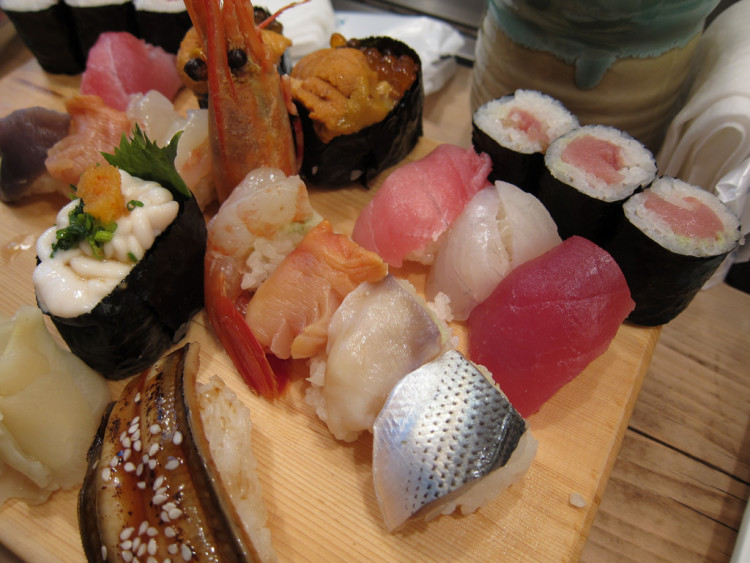 Fresh sushi breakfast at Tsukiji Fish Market in Tokyo.
Fresh sushi breakfast at Tsukiji Fish Market in Tokyo.
For your last morning after 10 days in Japan, enjoy an authentic sushi breakfast! Best place: Tsukiji Fish Market, the world’s largest fish market!
Tsukiji Market has two parts: inner (wholesale) and outer market. Inner market has the early morning tuna auction (4 am start!). Outer market is for foodies wanting seafood.
Daiwa Sushi and Sushi Dai are popular Tsukiji sushi shops with very long lines. We chose a random place and had a great experience – fresh fish, good service, reasonable prices. Sushi is high quality everywhere here. Decide if long lines are worth it.
To learn about Japanese food culture and the market, consider a Tsukiji Outer Market Food and Drink Walking Tour. Sample bonito, katsuobushi, dashi stock, sushi, sake, fresh tuna, local omelets, and more. I wish we’d done this, as we didn’t fully understand the market or foods on our own.
Next time in Japan, I want to take this Tsukiji Outer Fish Market and sushi-making class combo tour! I enjoy cooking classes while traveling.
Ginza Shopping
After sushi (and ice cream!), explore Ginza for upscale window shopping. Ginza is Tokyo’s most expensive shopping and real estate district, like New York’s Fifth Avenue, but with more lights!
Departure for Airport
 Traveler with luggage at a train station in Japan, ready to depart.
Traveler with luggage at a train station in Japan, ready to depart.
Depending on flight time, you might have more time, but it’s wise to get to the airport early for international flights.
Return to your hotel, collect bags, go to Tokyo Station, then Narita Airport (~1 hour via Narita Express). Have a final Japanese meal at the airport and depart from Japan.
If you have questions about this Japan travel itinerary 10 days, ask in the comments! Following this itinerary (like I did) ensures you see a lot in a short time, without stressful planning! 🙂
TRAVELING TO JAPAN SOON? Don’t forget travel insurance! I recommend World Nomads and SafetyWing.
I’ve been using SafetyWing recently as they cover pandemic-related claims (most don’t). Protect yourself from injury, lost baggage, delays, and theft. Learn more and sign up here.
Did you know…
Purchases through our links earn us a small fee (at no cost to you)! Win-win! If this article was helpful, use the links in the article or below. Thanks for your support!
Share this Japan travel itinerary 10 days with friends (copy and paste the link!) and start planning your trip! Have you been to Japan? What were your favorite things to do?
Photos via Day 1a | Day 2 and Steam Fire at Asakusa | cherry blossoms | Akihabara | Hakone 1 and 3| Hakone 2 |
